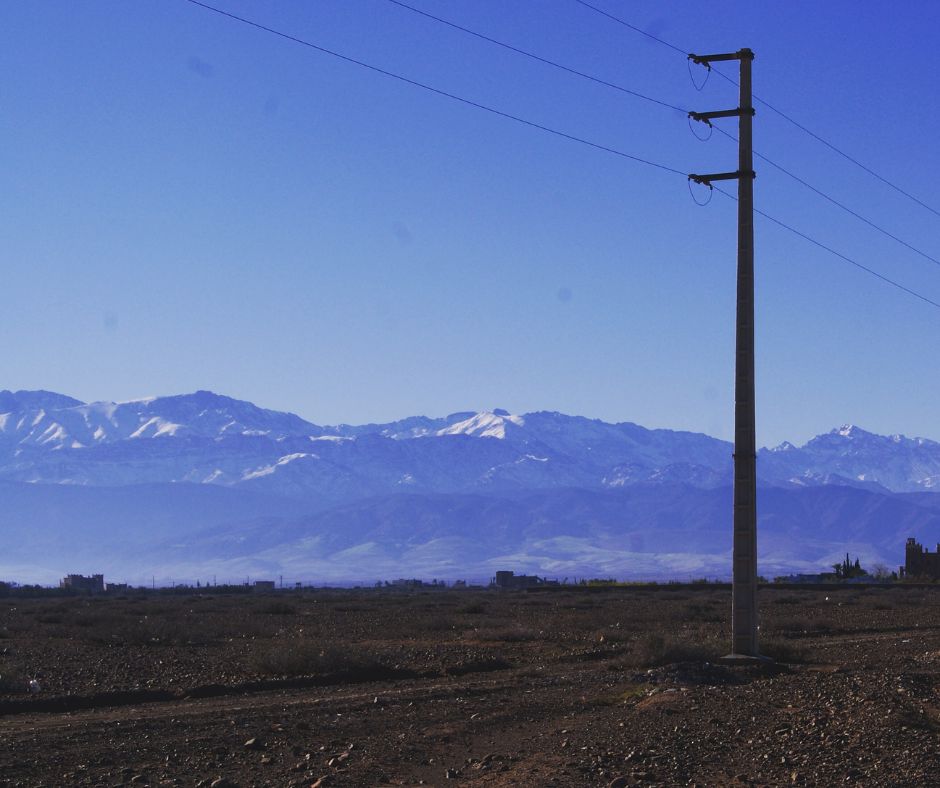Trekking the Atlas Mountains: A Hiker’s Dream
Nestled in North Africa, The Atlas Mountains stretch across Morocco, Algeria, and Tunisia.
It forming a rugged backbone that offers breathtaking landscapes and thrilling hiking experiences.
This majestic range spans approximately 2,500 kilometers, providing a diverse terrain that ranges from gentle slopes to towering peaks.
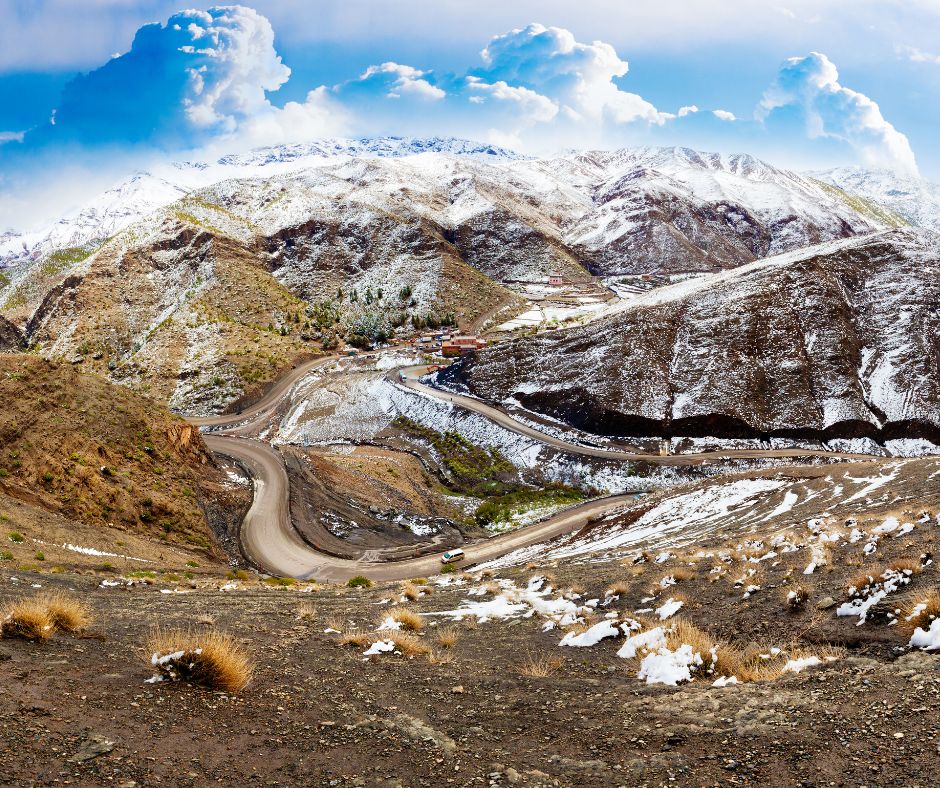
Historical Significance
The Atlas Mountains have been witness to centuries of history, serving as a natural barrier and a crossroads of civilizations. Berber communities have inhabited these mountains for millennia, leaving behind a rich tapestry of traditions, architecture, and cultural heritage. As hikers traverse these ancient pathways, they can discover the remnants of old trading routes, fortified villages, and sacred sites that speak volumes about the region’s storied past.
Ecological Diversity
Beyond its historical and cultural significance, the Atlas Mountains boast remarkable ecological diversity. The range encompasses a variety of ecosystems, from lush valleys dotted with almond and olive groves to arid plateaus and snow-capped peaks. This diverse landscape supports a wide array of flora and fauna, making it a haven for nature enthusiasts and conservationists alike.
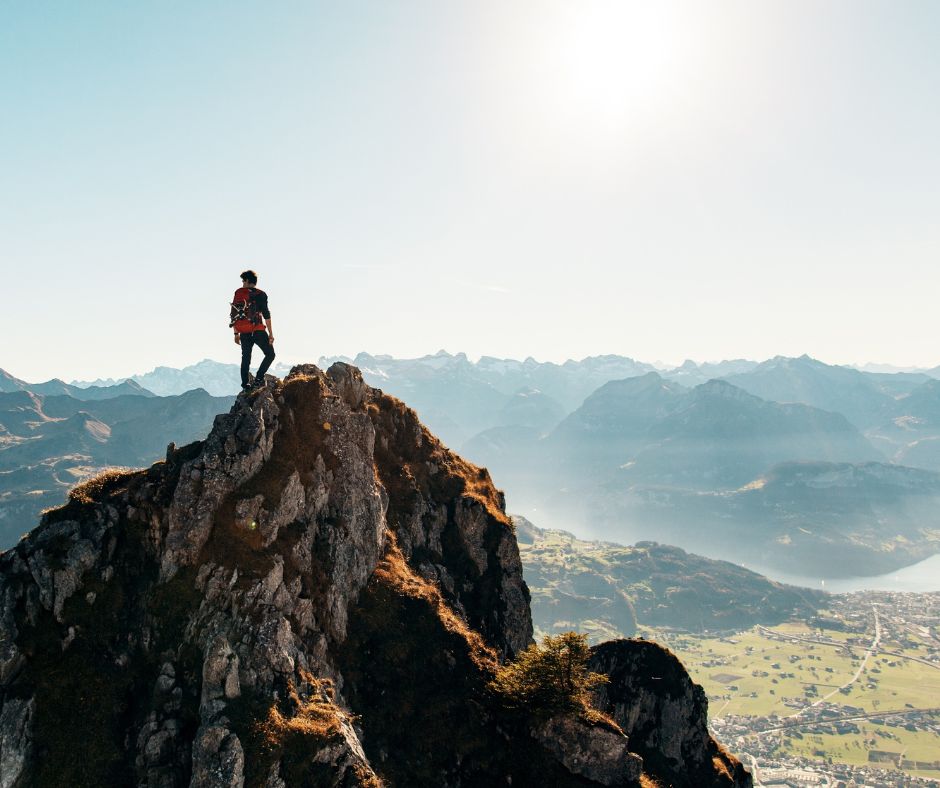
Understanding the Terrain: What to Expect
Variations in Altitude and Climate
One of the most striking features of the Atlas Mountains is the vast variations in altitude and climate. The range is divided into several distinct sections, each characterized by its unique climatic conditions and terrain. As hikers ascend higher, they can expect cooler temperatures and more challenging terrain, while the lower valleys offer milder climates and picturesque landscapes.

Notable Peaks and Ranges
The Atlas Mountains are home to several notable peaks and ranges that attract adventurers from around the globe. Jebel Toubkal, the highest peak in North Africa, stands at an impressive 4,167 meters and offers a challenging yet rewarding trek for experienced hikers. Other notable ranges include the Middle Atlas and the Anti-Atlas, each offering its own set of trails, peaks, and breathtaking vistas.
Flora and Fauna: An Overview
The diverse ecosystems of the Atlas Mountains support a rich variety of flora and fauna, making it a paradise for nature lovers. Hikers can expect to encounter an array of plant species, including juniper trees, wildflowers, and aromatic herbs such as thyme and rosemary. Wildlife enthusiasts can spot a variety of animals, including Barbary macaques, Atlas mountain foxes, and numerous bird species that call this rugged landscape home.

Essential Preparations for Your Trek
Embarking on a trek through the Atlas Mountains requires meticulous planning and preparation to ensure a safe and enjoyable experience. From physical fitness requirements to immersing yourself in Berber culture, here’s a comprehensive guide to help you prepare for your adventure.
Physical Fitness Requirements
Trekking in the Atlas Mountains demands a certain level of physical fitness, especially if you plan to tackle challenging routes or ascend to higher altitudes. Before your trek, engage in cardiovascular exercises, strength training, and endurance activities to build stamina and strength. It’s advisable to consult with a healthcare professional or fitness trainer to assess your fitness level and develop a tailored training regimen.
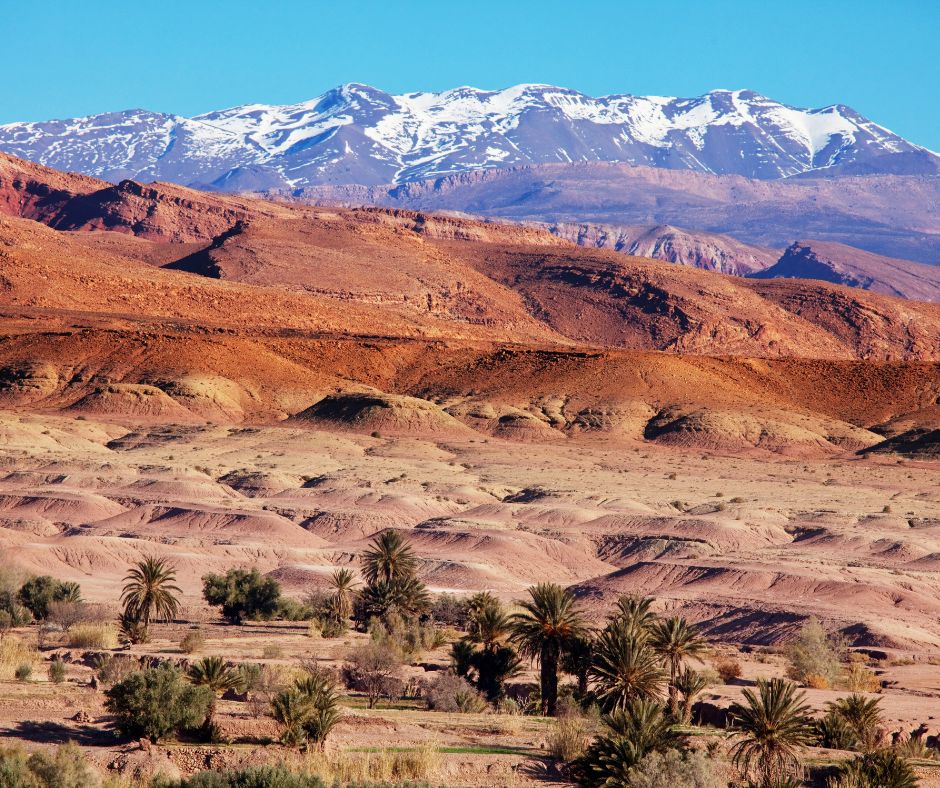
Packing Essentials: A Comprehensive Checklist
Packing the right gear and essentials is crucial for a successful trek in the Atlas Mountains. Here’s a comprehensive checklist to ensure you have everything you need:
Mountain Adventures
- Sturdy hiking boots with good ankle support
- Lightweight and moisture-wicking clothing layers
- Insulated jacket, hat, and gloves for cold temperatures
- Sun protection gear, including sunglasses and sunscreen
- Hydration system or reusable water bottles
- High-energy snacks and trail mix
- First-aid kit with essential medications
- Navigation tools, such as a map and compass or GPS device
- Lightweight camping gear (if camping overnight)
- Personal toiletries and hygiene products
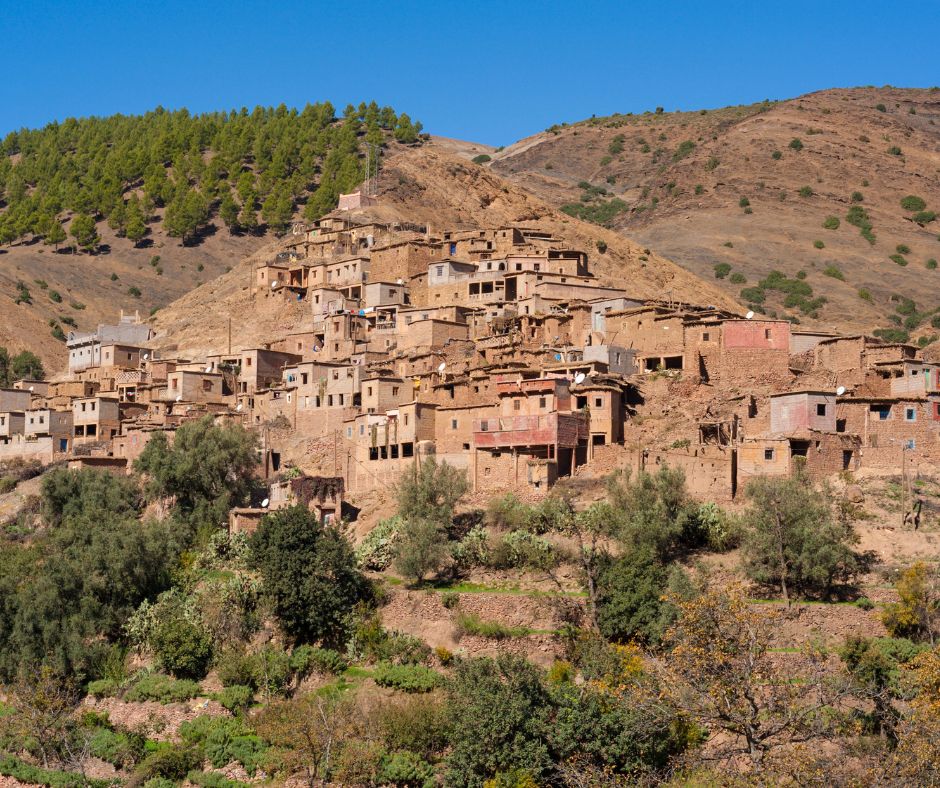
Acclimatization Strategies
Acclimatization is crucial when trekking in high-altitude regions like the Atlas Mountains to prevent altitude sickness and ensure a safe ascent. Plan your itinerary to include gradual altitude gains, take frequent breaks, stay hydrated, and listen to your body’s signals. If possible, spend a few days acclimatizing at lower altitudes before ascending to higher elevations.
Choosing the Right Trekking Route
The Atlas Mountains offer a variety of trekking routes catering to hikers of all levels, from novice to experienced. Consider factors such as duration, difficulty level, and points of interest when choosing a trekking route. Research popular trails like the Toubkal Circuit, M’goun Massif, or the picturesque valleys of the High Atlas to find a route that aligns with your fitness level and interests.
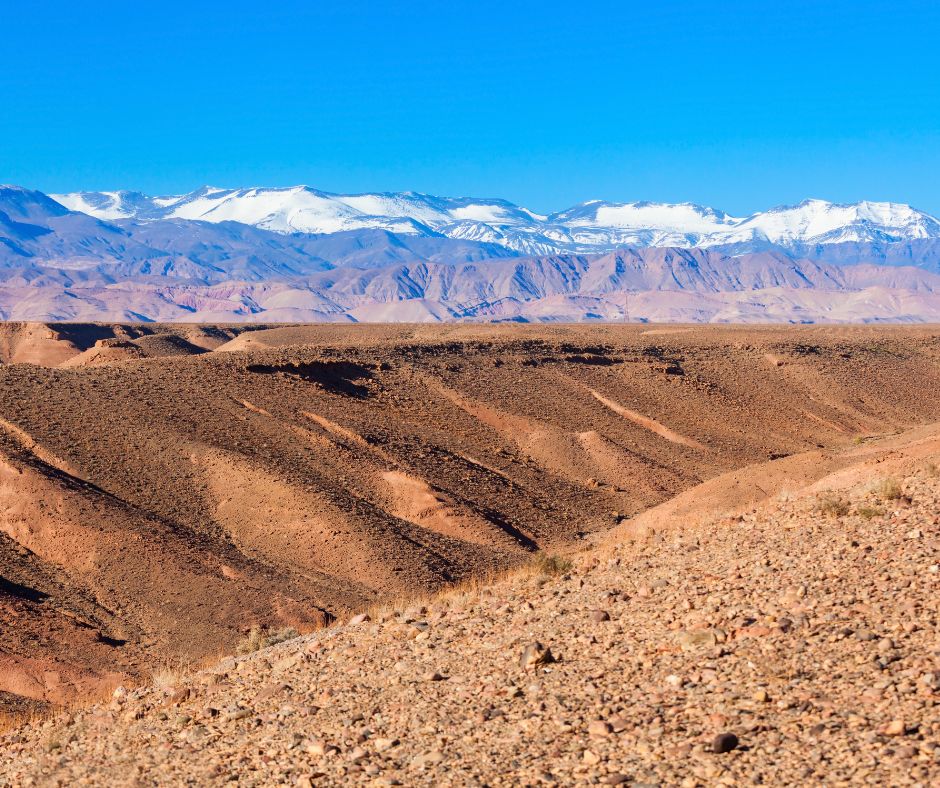
Popular Trekking Routes Explored
Duration and Difficulty Levels
The duration and difficulty of trekking routes in the Atlas Mountains vary depending on the chosen itinerary. Popular routes like the Toubkal Circuit typically range from 2 to 5 days and require a moderate to high level of fitness. It’s essential to assess your capabilities and select a route that matches your experience and fitness level to ensure a safe and enjoyable trek.
Customizing Your Itinerary
Customizing your itinerary allows you to tailor your trekking experience to meet your specific preferences and interests. Consider factors such as trekking duration, accommodation preferences (camping, guesthouses, or homestays), and cultural experiences when planning your itinerary. Research local tour operators or trekking agencies that offer customizable packages to create a personalized trekking experience.
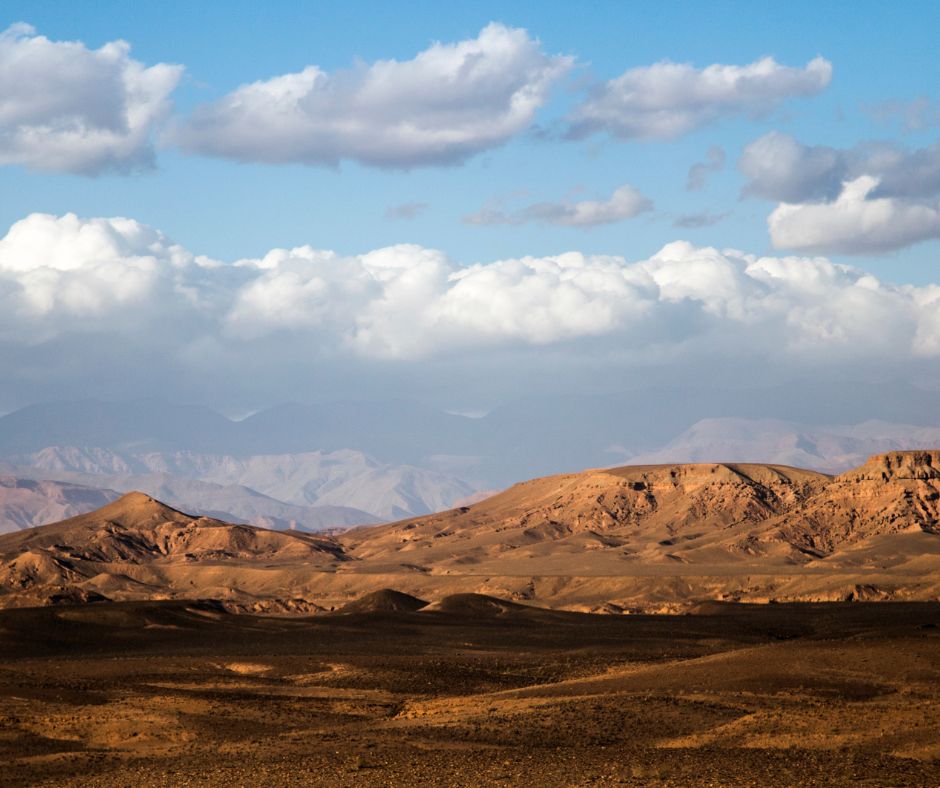
Cultural Encounters: Meeting the Berber People
Immersing yourself in Berber culture is an integral part of trekking in the Atlas Mountains, offering a unique opportunity to connect with local communities and learn about their traditions, customs, and way of life.
Berber Culture and Traditions
The Berber people have inhabited the Atlas Mountains for centuries, preserving their rich cultural heritage through traditional practices, festivals, and rituals. Engage with local communities to learn about Berber traditions, storytelling, music, and dance, and gain insights into their sustainable way of life.
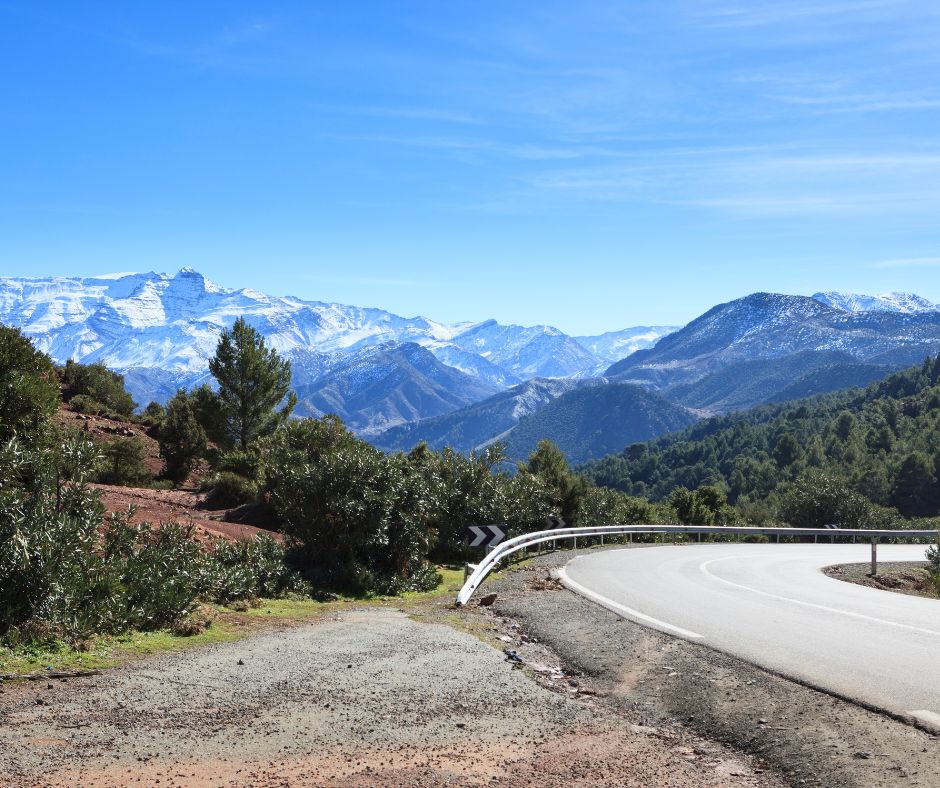
Homestay Opportunities
Experience authentic Berber hospitality by participating in homestay programs or guesthouse accommodations during your trek. Stay with local families, share meals, and immerse yourself in daily activities to gain a deeper understanding of Berber culture, traditions, and values. This immersive experience fosters cultural exchange, mutual respect, and lasting friendships with local communities.
Local Cuisine and Delicacies
Savor the flavors of Berber cuisine by sampling traditional dishes and delicacies prepared with fresh, locally sourced ingredients. Enjoy hearty tagines, couscous, bread, and aromatic spices that reflect the region’s culinary traditions and cultural influences. Participate in cooking demonstrations or workshops to learn traditional Berber recipes and cooking techniques, adding a gastronomic dimension to your trekking adventure.
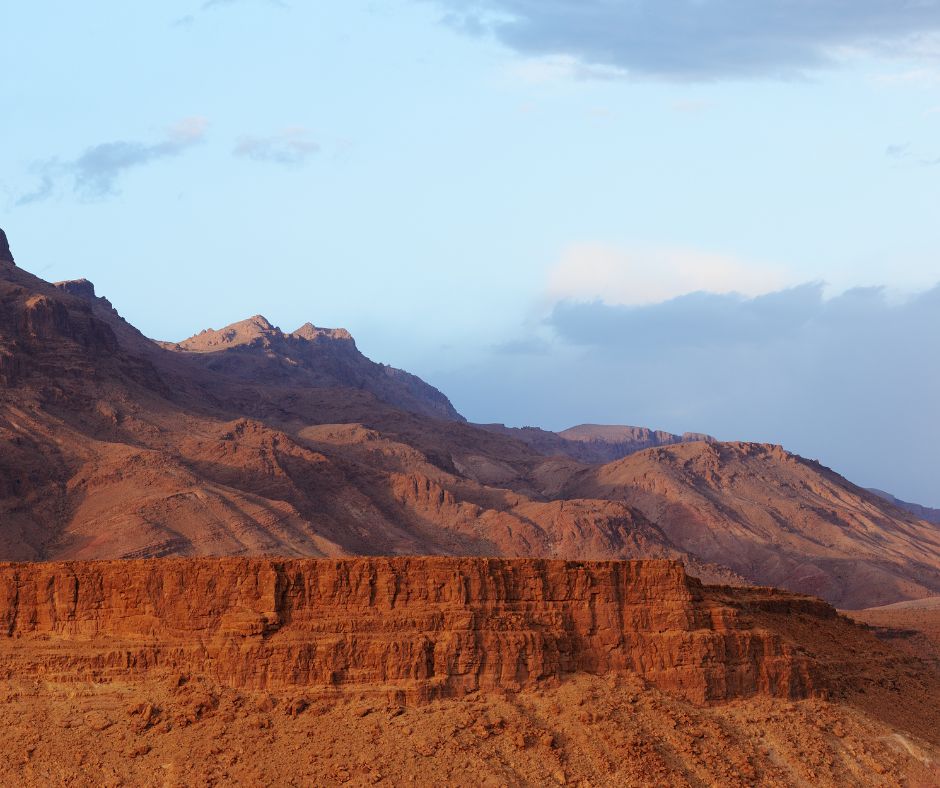
Safety Measures and Precautions
Embarking on a trek through the Atlas Mountains requires careful planning and adherence to safety measures to ensure a safe and enjoyable experience. From health considerations to seasonal variations, here’s a guide to help you navigate potential risks and hazards.
Health Considerations and Vaccinations
Before traveling to the Atlas Mountains, consult with a healthcare provider to discuss recommended vaccinations and health precautions. Common vaccinations may include hepatitis A, typhoid, tetanus, and rabies, depending on your travel itinerary and medical history. Additionally, pack essential medications, first-aid supplies, and a personal medical kit to address common health issues such as altitude sickness, gastrointestinal problems, and minor injuries.
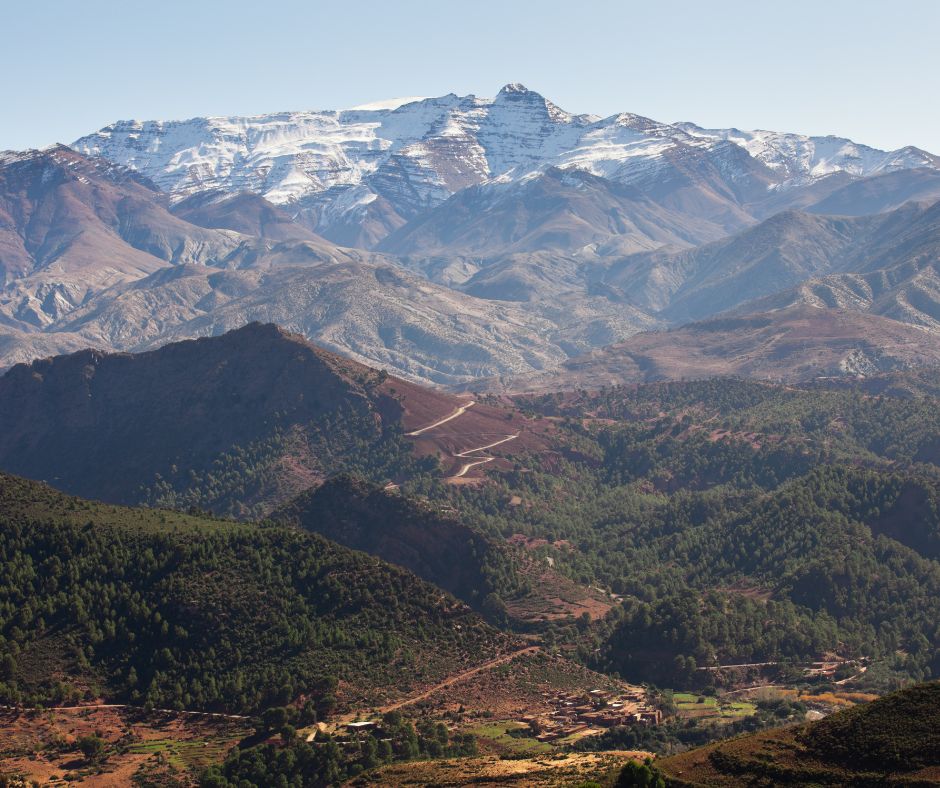
Travel Insurance Essentials
Securing comprehensive travel insurance is essential when trekking in remote and rugged terrains like the Atlas Mountains. Choose a policy that covers emergency medical expenses, evacuation services, trip cancellations or interruptions, and personal belongings. Read the fine print, understand policy exclusions, and carry proof of insurance and emergency contact information with you at all times.
Emergency Contacts and Protocols
Compile a list of essential emergency contacts, including local authorities, emergency services, tour operators, and accommodation providers. Share your itinerary with trusted family members or friends, check in regularly, and establish communication protocols in case of emergencies, such as satellite phones or GPS tracking devices.
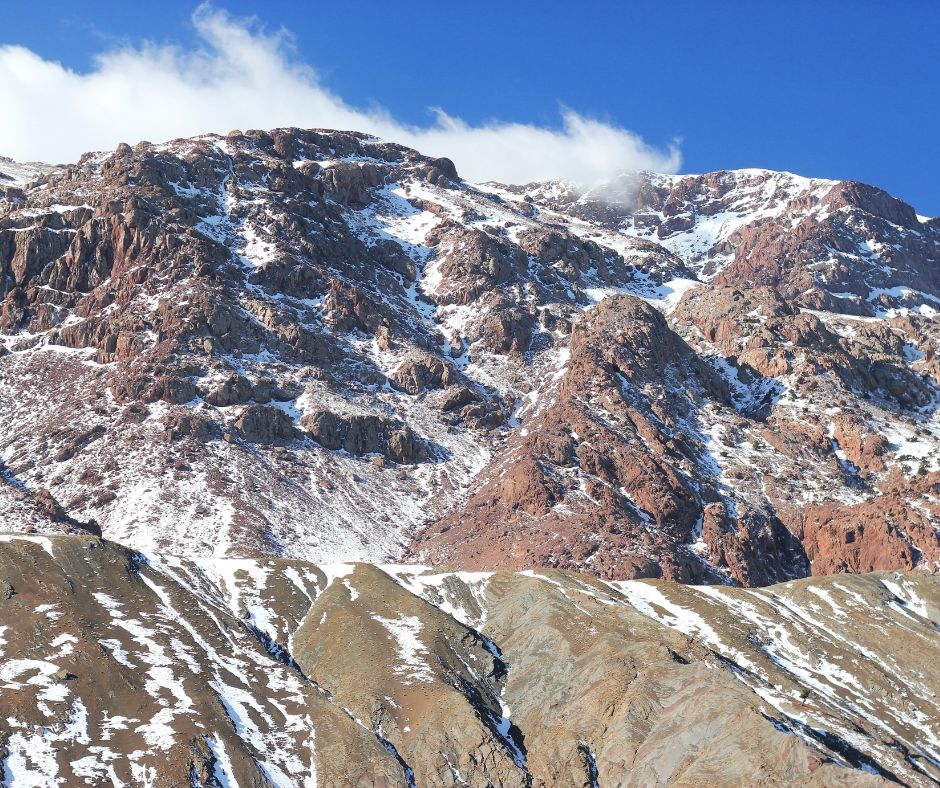
Gear Up: Equipment and Gear Guide
Packing the right equipment and gear is crucial for a safe and enjoyable trekking experience in the Atlas Mountains. Here’s a guide to essential gear and considerations for varying climates and conditions.
Invest in a sturdy pair of hiking boots with good ankle support, traction, and waterproof capabilities. Break in your boots before the trek, ensure a proper fit, and pack lightweight camp shoes or sandals for rest stops and campsite activities.
Clothing Essentials for Varying Climates
Pack versatile and moisture-wicking clothing layers suitable for varying climates and conditions. Include base layers, insulating mid-layers, waterproof outerwear, and accessories such as hats, gloves, and neck gaiters. Dress in layers to regulate body temperature, manage moisture, and adapt to changing weather conditions.
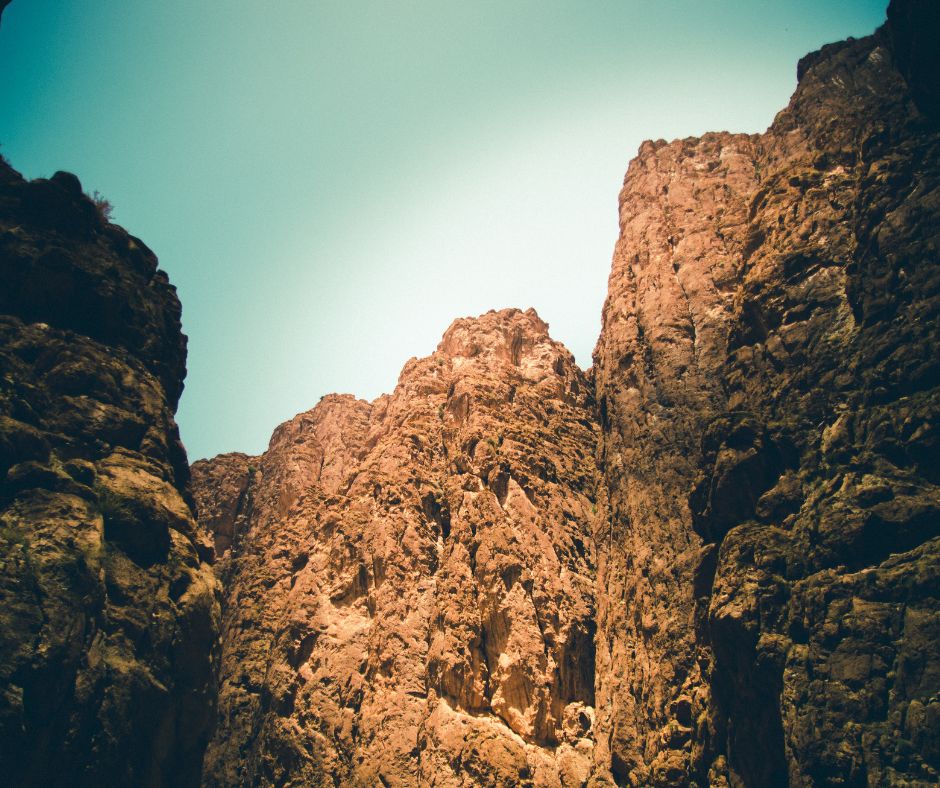
Navigation Tools and Accessories
Carry essential navigation tools and accessories to navigate trails, monitor progress, and ensure safety. Pack a detailed map, compass, GPS device, or smartphone with offline maps, and a reliable altimeter to track altitude gains and changes.
Seasonal Considerations: Best Times to Trek
Understanding climate patterns and seasonal variations is essential when planning your trekking adventure in the Atlas Mountains. Consider factors such as weather conditions, peak seasons, off-peak advantages, and special events or festivals to optimize your experience.
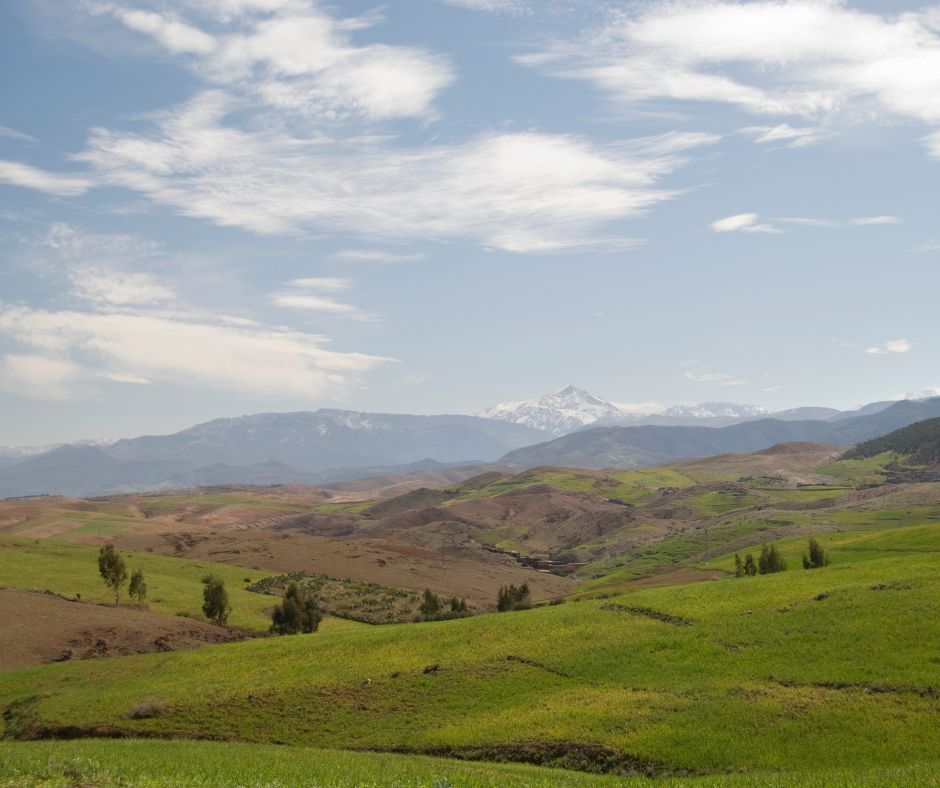
Climate Patterns and Seasonal Variations
The Atlas Mountains experience distinct climate patterns and seasonal variations that influence trekking conditions and accessibility. Research regional weather forecasts, temperature ranges, precipitation levels, and seasonal trends to select the best time to trek based on your preferences and objectives.
Peak Seasons vs. Off-Peak Advantages
Peak trekking seasons in the Atlas Mountains typically occur during the spring (March to May) and autumn (September to November) months when weather conditions are favorable, and trails are less crowded. Consider off-peak advantages such as lower costs, fewer tourists, and unique experiences during shoulder seasons or winter months, but be prepared for colder temperatures and potential trail closures.
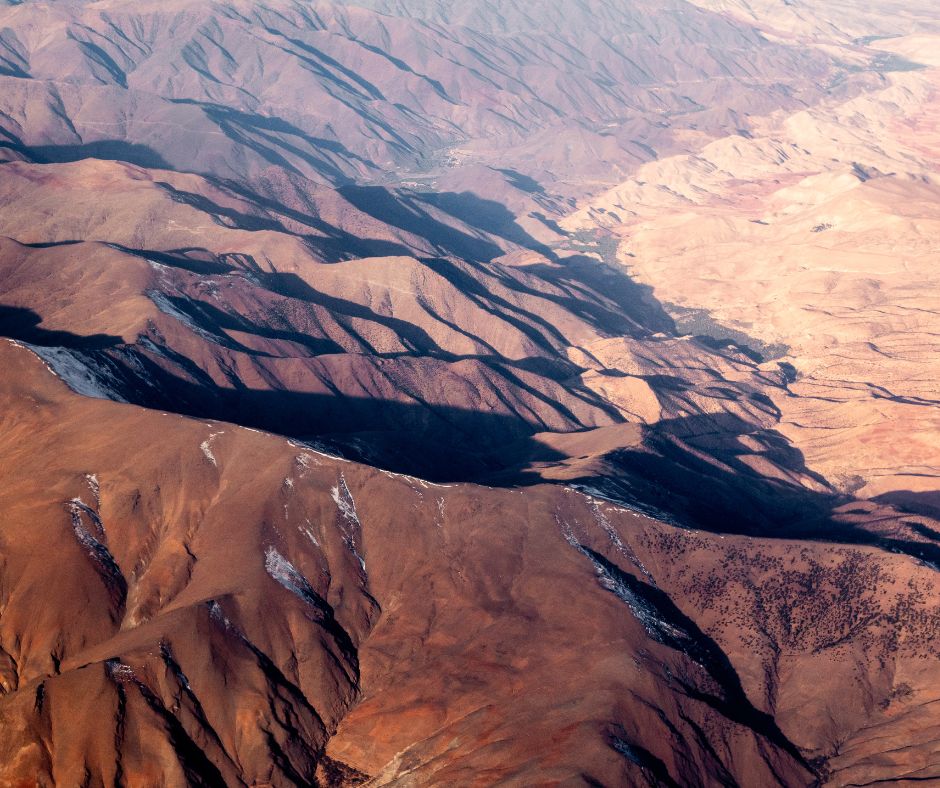
Special Events and Festivals
Immerse yourself in local culture and traditions by attending special events and festivals that coincide with your trekking itinerary. Research regional celebrations, religious holidays, and cultural festivals such as the Rose Festival in the Dades Valley or Berber New Year to enhance your cultural experience and connect with local communities.
In conclusion, prioritizing safety measures, packing essential gear, understanding seasonal considerations, and embracing cultural experiences are essential elements of a successful trek in the Atlas Mountains. By planning, adhering to best practices, and staying informed, you’ll embark on a memorable journey filled with adventure, discovery, and personal growth.
Navigating the Trails: Navigation Tips
Successfully navigating the trails of the Atlas Mountains requires a combination of preparation, tools, and local expertise. Here are some essential navigation tips to help you traverse the rugged terrain with confidence.
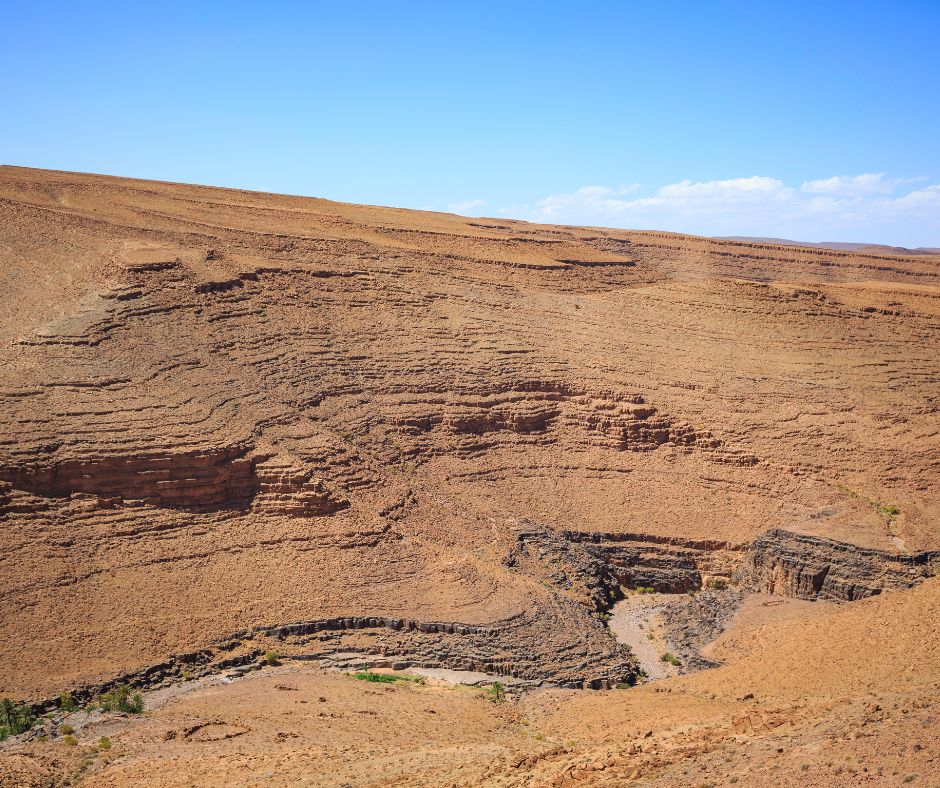
Topographical Maps and Resources
Invest in detailed topographical maps, guidebooks, and trail resources specific to the Atlas Mountains to familiarize yourself with terrain features, trail markers, and points of interest. Study your route, identify landmarks, and plan waypoints to navigate trails effectively and stay on course.
GPS and Digital Tools
Utilize GPS devices, smartphone apps, and digital tools to enhance navigation accuracy, track progress, and monitor real-time conditions. Download offline maps, satellite imagery, and navigation apps such as Gaia GPS, and Maps. me, or AllTrails to access essential information and resources when offline or in remote areas.
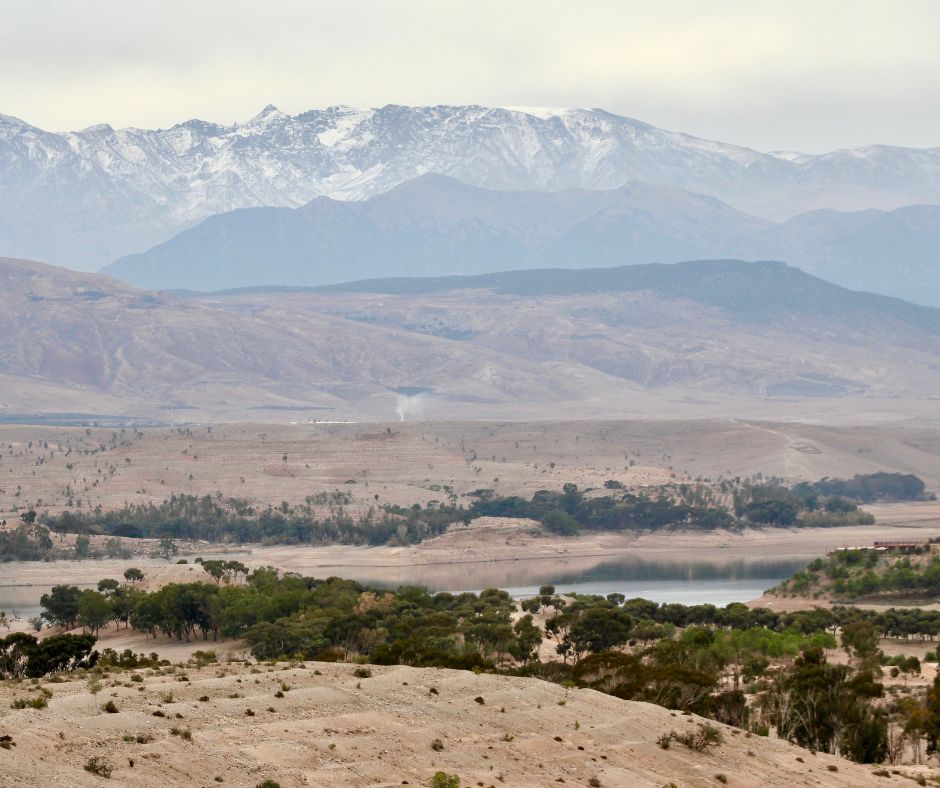
Local Guides and Expertise
Engage with local guides, trekking agencies, or experienced hikers familiar with the Atlas Mountains to gain valuable insights, navigation tips, and cultural knowledge. Leverage their expertise to navigate challenging trails, interpret local conditions, and enhance your trekking experience with personalized guidance and support.
Camping Under the Stars: Accommodation Options
Experience the beauty and tranquility of the Atlas Mountains by camping under the stars or staying in local lodges and accommodations. Here’s a guide to popular options and safety protocols for wilderness camping.
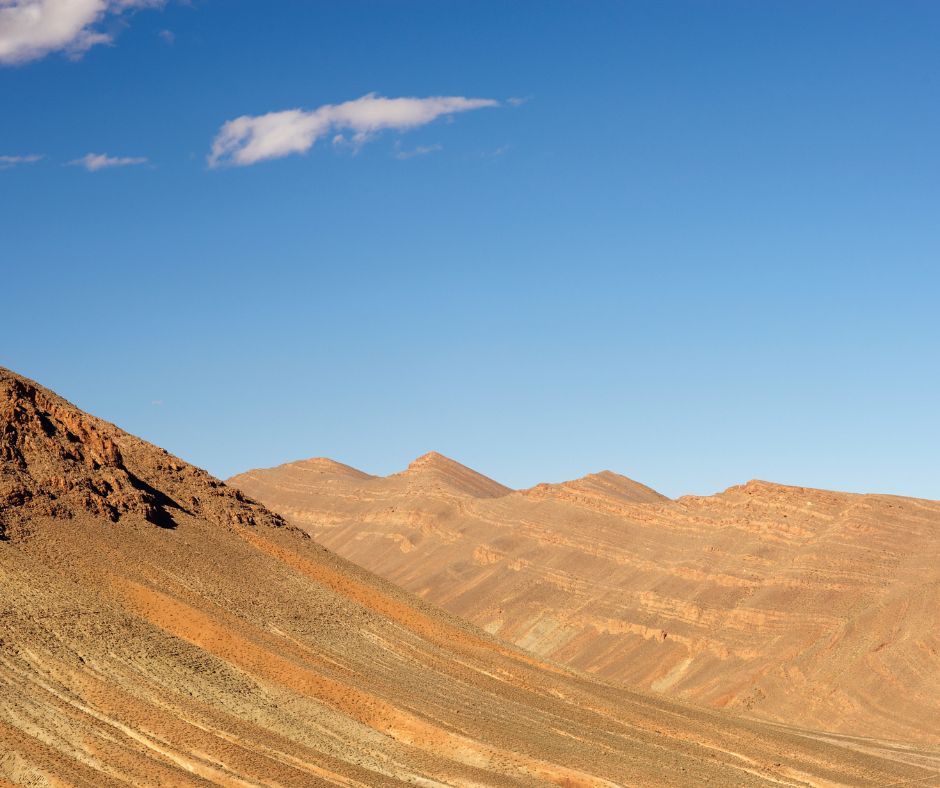
Camping vs. Lodge Accommodations
Choose between camping under the stars or staying in local lodges and guesthouses based on your preferences, budget, and trekking itinerary. Camping offers a unique wilderness experience, flexibility, and solitude, while lodges provide comfort, amenities, and opportunities to connect with local communities.
Popular Camping Spots and Facilities
Discover popular camping spots, designated campsites, and facilities scattered throughout the Atlas Mountains, including remote valleys, mountain passes, and scenic viewpoints. Research camping regulations, permits, and facilities such as water sources, designated fire pits, and waste disposal to minimize environmental impact and ensure a safe and enjoyable camping experience.
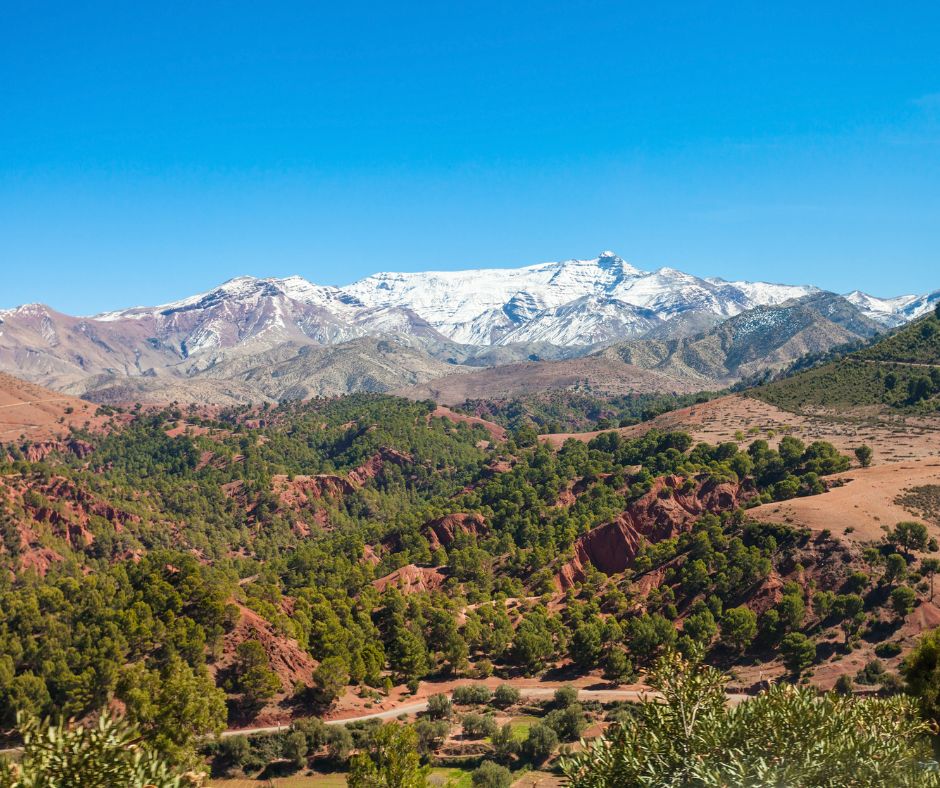
Safety Protocols for Wilderness Camping
Adhere to essential safety protocols when wilderness camping in the Atlas Mountains to mitigate risks and ensure your well-being. Familiarize yourself with local wildlife, weather conditions, and potential hazards such as avalanches, rockfalls, and extreme temperatures. Practice Leave No Trace principles, secure food and waste storage, and follow established camping regulations and guidelines to protect natural resources and preserve the wilderness for future generations.
Capturing the Moments: Photography Tips
Capture breathtaking landscapes, cultural experiences, and memorable moments during your trekking adventure in the Atlas Mountains with these photography tips and recommendations.
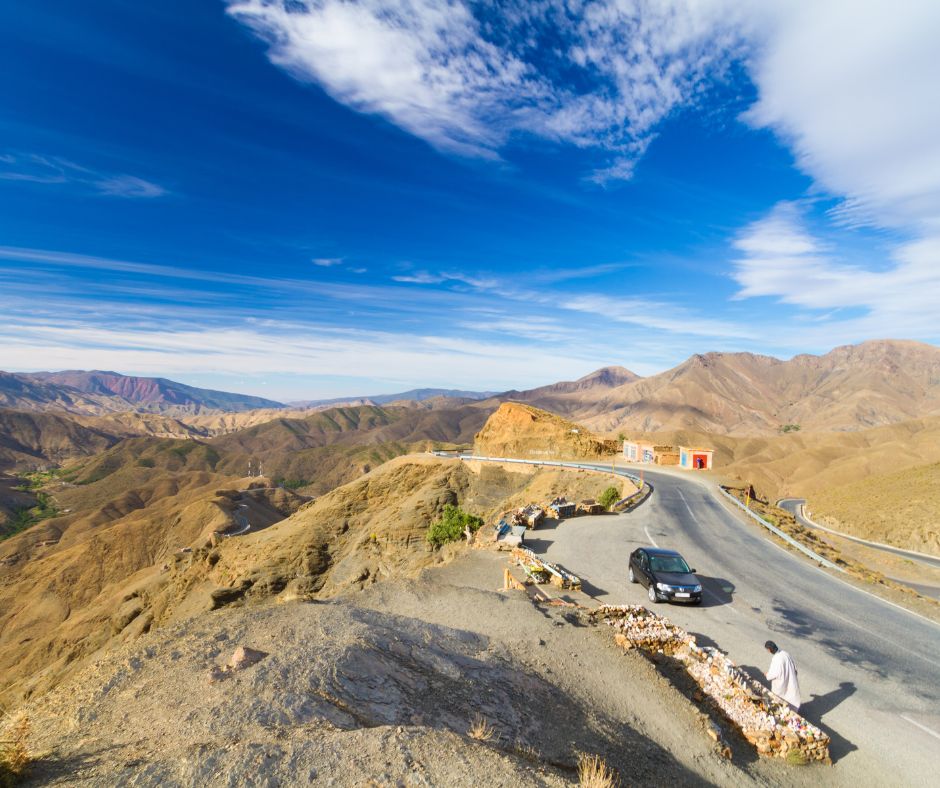
Best Photography Spots
Explore the best photography spots, viewpoints, and scenic locations in the Atlas Mountains to capture stunning landscapes, panoramic views, and cultural highlights. Research popular destinations such as Jebel Toubkal, Dades Valley, and Ait Ben Haddou to plan your photography itinerary and maximize opportunities for unique shots.
Equipment Recommendations
Pack essential photography equipment, including a digital camera, wide-angle and zoom lenses, tripod, filters, and extra batteries, to capture diverse scenes and lighting conditions. Consider lightweight and weather-resistant gear to withstand rugged terrain, variable climates, and outdoor challenges without compromising image quality.
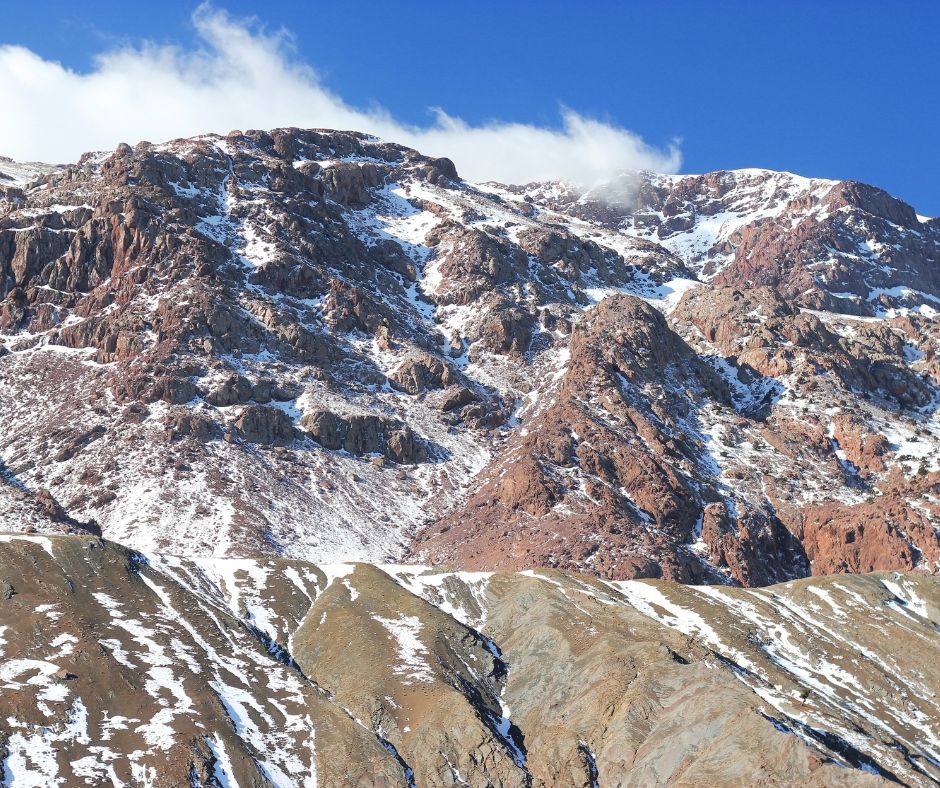
Responsible Photography Practices
Practice responsible photography and ethical behavior when capturing images of people, wildlife, and cultural sites in the Atlas Mountains. Seek consent when photographing individuals, respect privacy and cultural traditions, and refrain from disrupting natural habitats or wildlife behavior. Embrace storytelling, authenticity, and respect for local communities and environments to create meaningful and impactful images that reflect the spirit and beauty of your trekking adventure.
In conclusion, mastering navigation techniques, choosing accommodation options, and practicing responsible photography are essential elements of a successful and rewarding trekking experience in the Atlas Mountains. By preparing adequately, respecting local cultures and environments, and embracing the adventure, you’ll create lasting memories and unforgettable moments that celebrate the natural beauty and cultural heritage of this spectacular region.
Trekking Etiquette: Respecting Nature and Culture
Embarking on a trekking adventure in the Atlas Mountains requires a commitment to responsible travel practices, environmental stewardship, and cultural respect. Here’s a guide to trekking etiquette that emphasizes respect for nature, wildlife, and local communities.
Leave No Trace Principles
Adhere to Leave No Trace principles to minimize your environmental impact, preserve natural resources, and maintain the pristine beauty of the Atlas Mountains. Follow guidelines such as packing out trash, disposing of waste properly, staying on designated trails, minimizing campfire impacts, and respecting wildlife and vegetation. Educate yourself and fellow trekkers about responsible outdoor ethics and practices to ensure a sustainable and eco-friendly trekking experience.
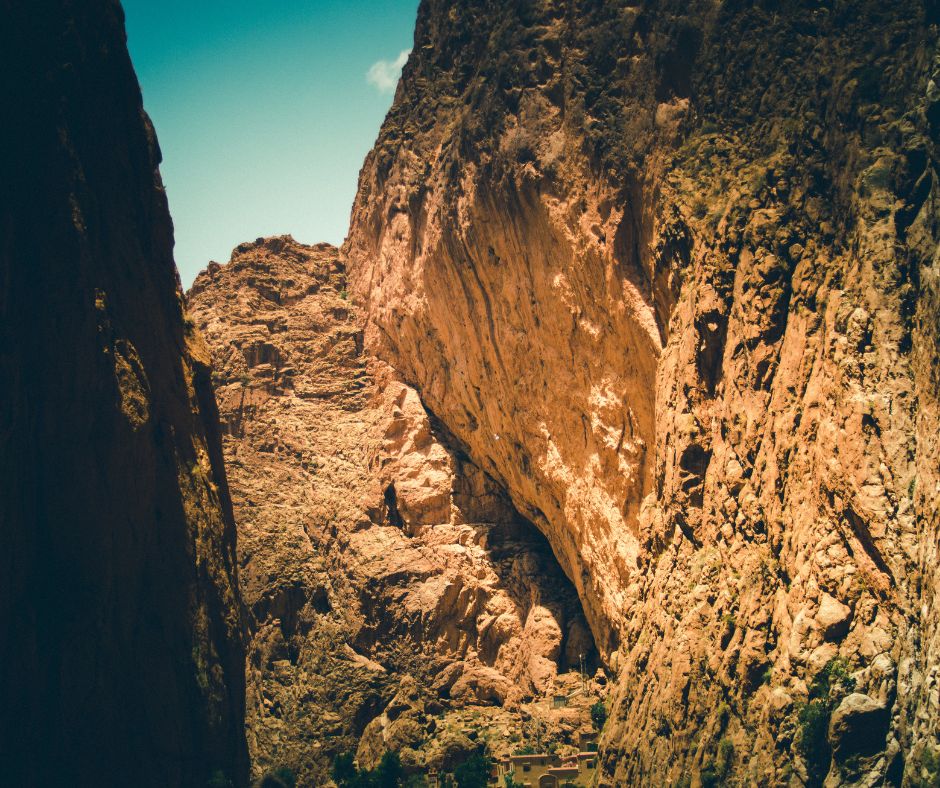
Interacting with Wildlife
Respect wildlife and natural habitats by observing from a distance, avoiding direct contact or feeding, and minimizing disturbances that could disrupt behavior or endanger species. Research local wildlife, migration patterns, and protected areas to plan your trekking itinerary responsibly and ethically. Engage with local guides or conservation experts to learn about wildlife conservation efforts, endangered species, and habitat preservation initiatives in the Atlas Mountains.
Cultural Sensitivities and Respectful Behavior
Immerse yourself in local culture, traditions, and customs by respecting cultural sensitivities, religious beliefs, and social norms prevalent in the Atlas Mountains. Seek consent before photographing individuals, participating in cultural activities, or visiting sacred sites. Embrace open-mindedness, humility, and respect for diversity to foster meaningful interactions, cross-cultural understanding, and mutual respect with local communities.
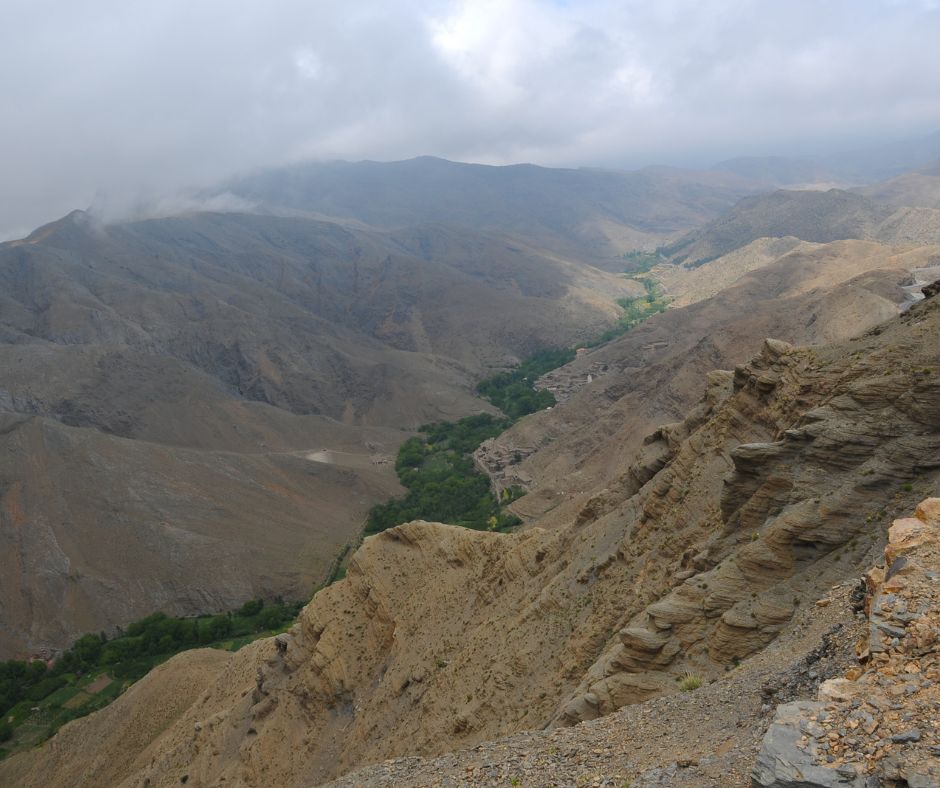
Water Sources and Hydration Strategies
Staying hydrated and accessing clean water sources is crucial when trekking in the Atlas Mountains, especially in remote or rugged terrains. Here’s a guide to identifying clean water sources, portable filtration systems, and hydration techniques.
Identifying Clean Water Sources
Identify clean water sources such as streams, rivers, springs, or natural reservoirs when trekking in the Atlas Mountains. Inspect water clarity, odor, and potential contamination risks before collecting or consuming untreated water. Consult with local guides, conservation experts, or authorities to identify reliable water sources and avoid potential hazards such as pollution, agricultural runoff, or industrial activities.
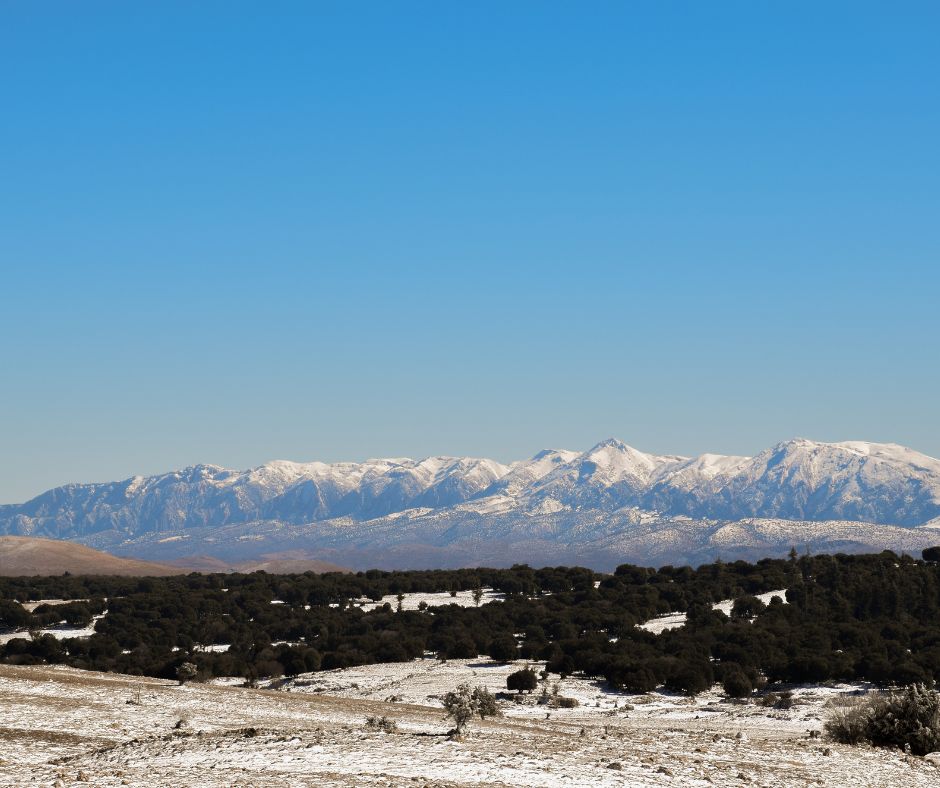
Portable Water Filtration Systems
Invest in portable water filtration systems, purification tablets, or UV sterilization devices to treat untreated water and remove harmful contaminants. Pack lightweight and compact filtration systems suitable for backpacking, hiking, or camping activities. Follow manufacturer instructions, treatment protocols, and safety guidelines to ensure effective water purification and minimize health risks associated with waterborne illnesses.
Hydration Techniques and Tips
Develop hydration techniques and strategies to maintain optimal fluid balance, electrolyte levels, and overall hydration during your trekking adventure in the Atlas Mountains. Carry sufficient water supplies, replenish fluids regularly, and monitor hydration status based on activity level, weather conditions, and environmental factors. Incorporate electrolyte-replacement drinks, high-water-content foods, and hydration breaks to prevent dehydration, fatigue, and heat-related illnesses.
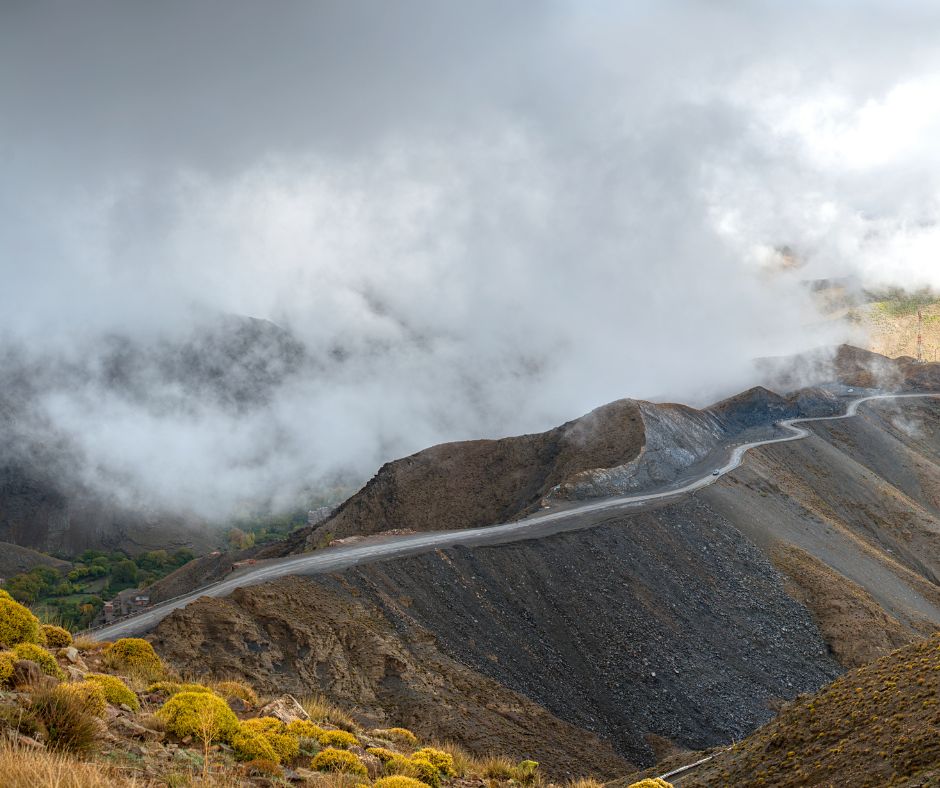
Flora and Fauna: Nature Spotting Guide
Explore the diverse flora and fauna of the Atlas Mountains by engaging in nature spotting, wildlife watching, and plant identification activities during your trekking adventure. Here’s a guide to indigenous plant species, wildlife encounters, and environmental conservation efforts in the region.
Indigenous Plant Species
Discover indigenous plant species, botanical diversity, and unique ecosystems that characterize the Atlas Mountains. Research native plants, flowering species, and vegetation zones such as cedar forests, oak woodlands, or alpine meadows. Learn about medicinal plants, aromatic herbs, and culinary ingredients used in traditional Berber cuisine and cultural practices.
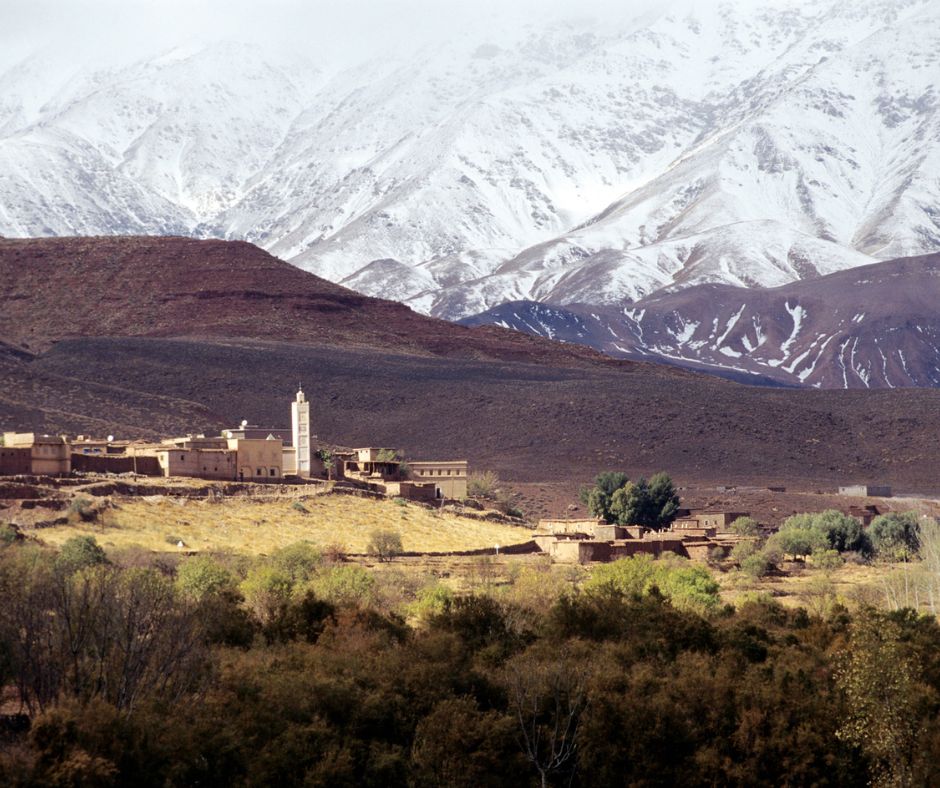
Wildlife Encounters: What to Look For
Spot iconic wildlife species, migratory birds, and endemic fauna that inhabit the diverse ecosystems of the Atlas Mountains. Look for wildlife such as Barbary macaques, Atlas mountain foxes, golden eagles, oryx, and various reptiles, amphibians, and insects. Practice responsible wildlife watching, maintain a safe distance, and avoid disturbing natural behaviors or habitats to minimize impact and ensure ethical encounters.
Environmental Conservation Efforts
Support environmental conservation efforts, sustainability initiatives, and community-based projects that promote responsible tourism, habitat restoration, and biodiversity conservation in the Atlas Mountains. Engage with local conservation organizations, volunteer opportunities, or eco-tourism operators to contribute to positive environmental outcomes, wildlife protection, and cultural preservation efforts. Educate yourself and fellow trekkers about conservation challenges, climate change impacts, and collaborative solutions to protect the natural beauty and ecological integrity of this spectacular region.
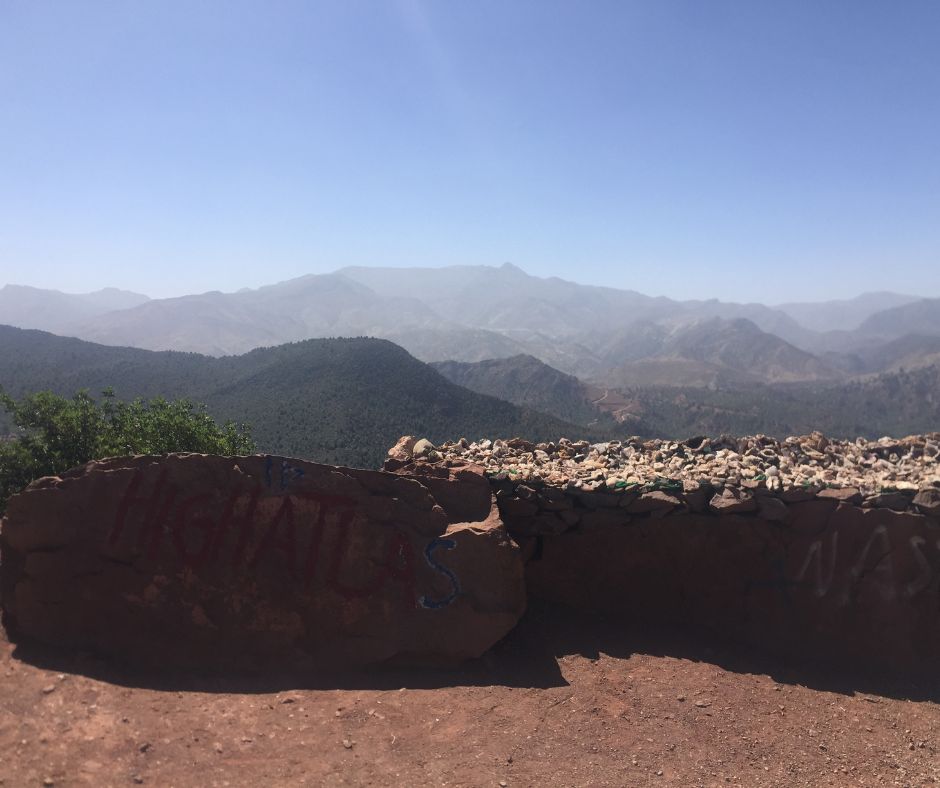
Solo vs. Group Trekking: Pros and Cons
Embarking on a trekking adventure in the Atlas Mountains presents you with the choice between solo and group expeditions. Both options offer unique advantages and considerations that cater to different preferences, objectives, and experiences. Here’s a comparison to help you make an informed decision.
Advantages of Solo Trekking
Flexibility and Freedom: Solo trekking provides unparalleled flexibility to set your pace, itinerary, and daily activities according to your preferences, interests, and comfort level.
Personal Growth and Independence: Solo trekking fosters self-reliance, independence, and personal growth by challenging you to navigate trails, overcome obstacles, and manage unforeseen circumstances on your own.
Intimate Connection with Nature: Solo trekking allows you to immerse yourself fully in the natural surroundings, wildlife, and cultural experiences without distractions or external influences.
Customized Experience: Solo trekking enables you to customize your itinerary, route, and activities based on your fitness level, interests, and objectives, creating a personalized and unique adventure.
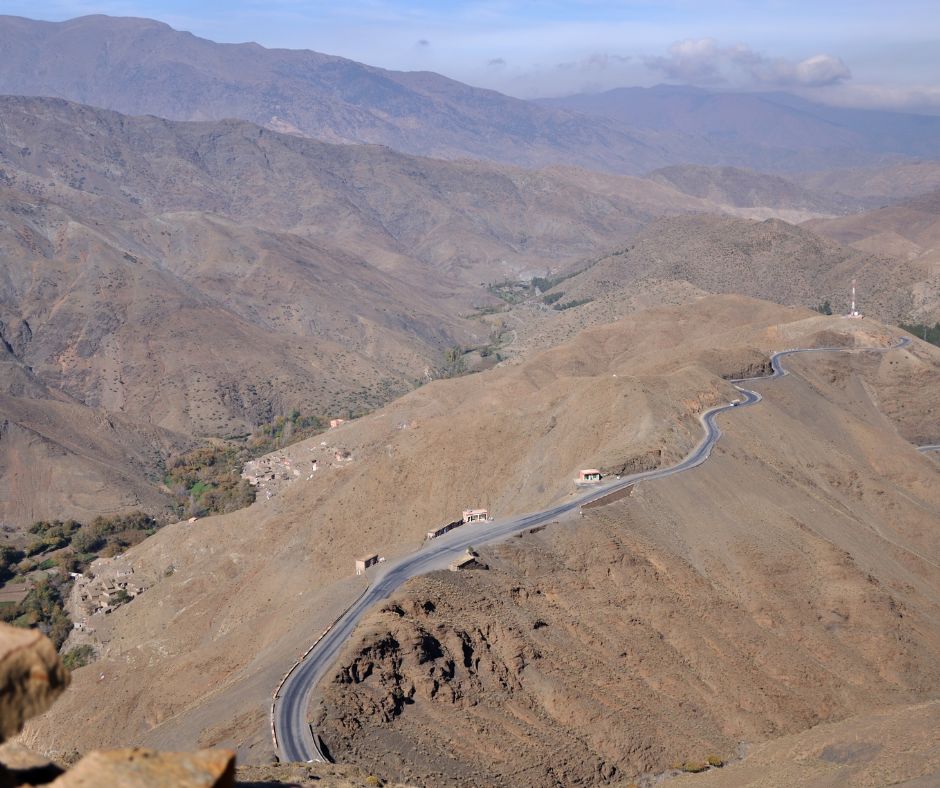
Benefits of Group Expeditions
Safety and Security: Group expeditions offer enhanced safety, security, and support through collective resources, shared responsibilities, and collaborative decision-making among participants.
Social Interaction and Camaraderie: Group trekking facilitates social interaction, camaraderie, and shared experiences with like-minded individuals, fostering friendships, and community connections.
Guided Expertise and Local Knowledge: Group expeditions often include experienced guides, local experts, and knowledgeable leaders who provide guidance, support, and insights into the region’s history, culture, and natural wonders.
Cost Efficiency and Shared Expenses: Group trekking can be more cost-effective due to shared expenses, resources, and accommodations, allowing participants to leverage economies of scale and budget-friendly options.
Budgeting and Financial Planning
Planning a trekking adventure in the Atlas Mountains requires careful budgeting, financial planning, and consideration of various factors, expenses, and resources. Here’s a guide to help you manage costs, prioritize expenses, and make informed financial decisions.
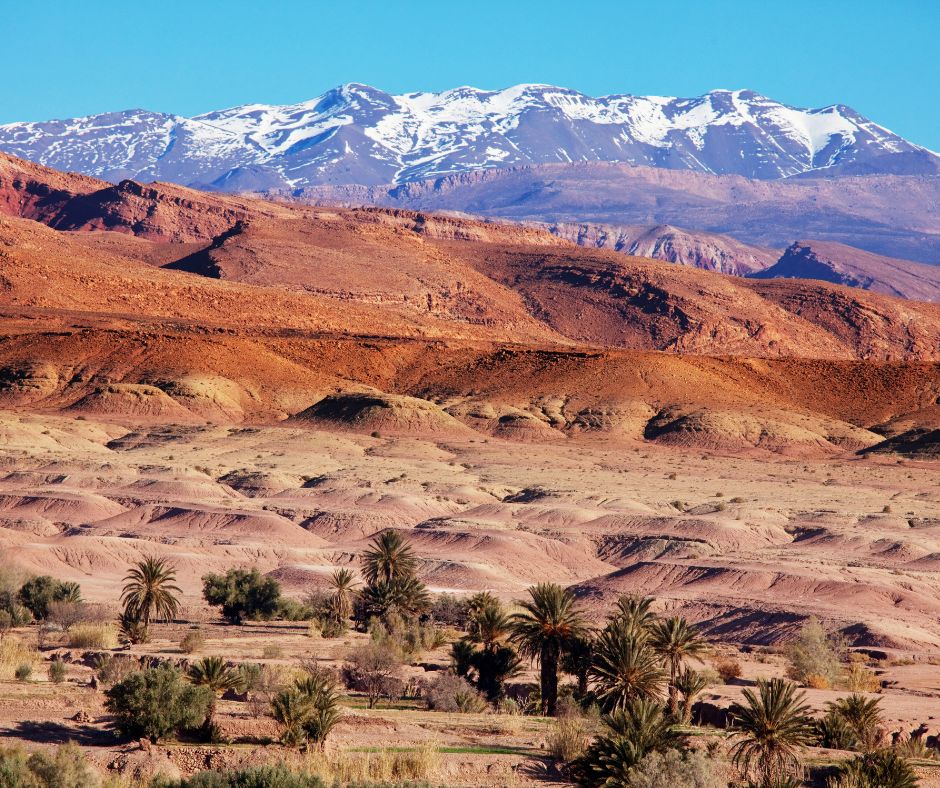
Cost Breakdown: A Detailed Analysis
Transportation: Consider costs associated with flights, ground transportation, transfers, and local transportation within the Atlas Mountains region.
Accommodations: Evaluate expenses related to lodging options, camping fees, guesthouses, or lodge accommodations during your trekking itinerary.
Food and Supplies: Estimate costs for meals, snacks, drinking water, cooking supplies, and essential provisions required for your trekking adventure.
Permits and Fees: Research permit requirements, entrance fees, conservation contributions, and other mandatory expenses associated with trekking in protected areas or national parks.
Money-saving Tips and Tricks
Early Booking Discounts: Take advantage of early booking discounts, promotional offers, and seasonal deals offered by tour operators, airlines, or accommodations.
Group Discounts and Shared Expenses: Explore group discounts, shared accommodations, and collaborative arrangements to leverage cost savings and budget-friendly options.
Flexible Travel Dates: Consider flexible travel dates, off-peak seasons, or shoulder periods to capitalize on lower prices, reduced crowds, and favorable conditions.
DIY Planning and Self-guided Treks: Opt for DIY planning, self-guided treks, or independent travel arrangements to avoid agency fees, markups, or commission charges associated with organized tours.
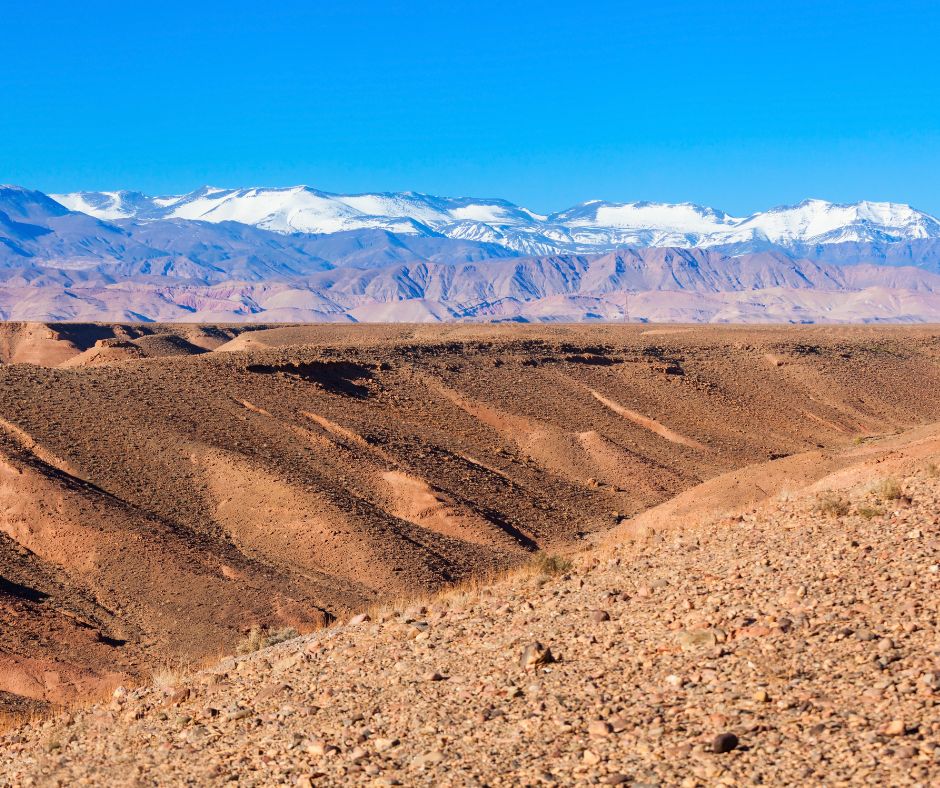
Hidden Expenses to Consider
Unforeseen Costs: Allocate a contingency budget for unforeseen expenses, emergencies, or unexpected situations that may arise during your trekking adventure.
Optional Activities and Excursions: Budget for optional activities, excursions, or cultural experiences that require additional fees, reservations, or arrangements.
Travel Insurance and Medical Expenses: Include costs for comprehensive travel insurance, medical coverage, evacuation services, or emergency assistance required for trekking in remote or rugged terrains.
Gear and Equipment Rentals: Factor in expenses for gear and equipment rentals, purchases, or upgrades necessary for your trekking itinerary, fitness level, and environmental conditions.
Physical and Mental Preparation
Preparing for a trekking adventure in the Atlas Mountains requires comprehensive physical and mental preparation, conditioning, and readiness. Here’s a guide to training regimens, mindfulness practices, and strategies to overcome common challenges.
Training Regimens for Trekking
Cardiovascular Fitness: Develop cardiovascular endurance, stamina, and aerobic capacity through activities such as hiking, running, cycling, or swimming to build endurance and improve overall fitness.
Strength and Conditioning: Incorporate strength training, core exercises, and resistance workouts to build muscle strength, stability, and functional fitness essential for trekking, climbing, and navigating rugged terrains.
Flexibility and Mobility: Incorporate flexibility exercises, stretching routines, and mobility drills to improve range of motion, joint flexibility, and muscular balance during trekking activities.
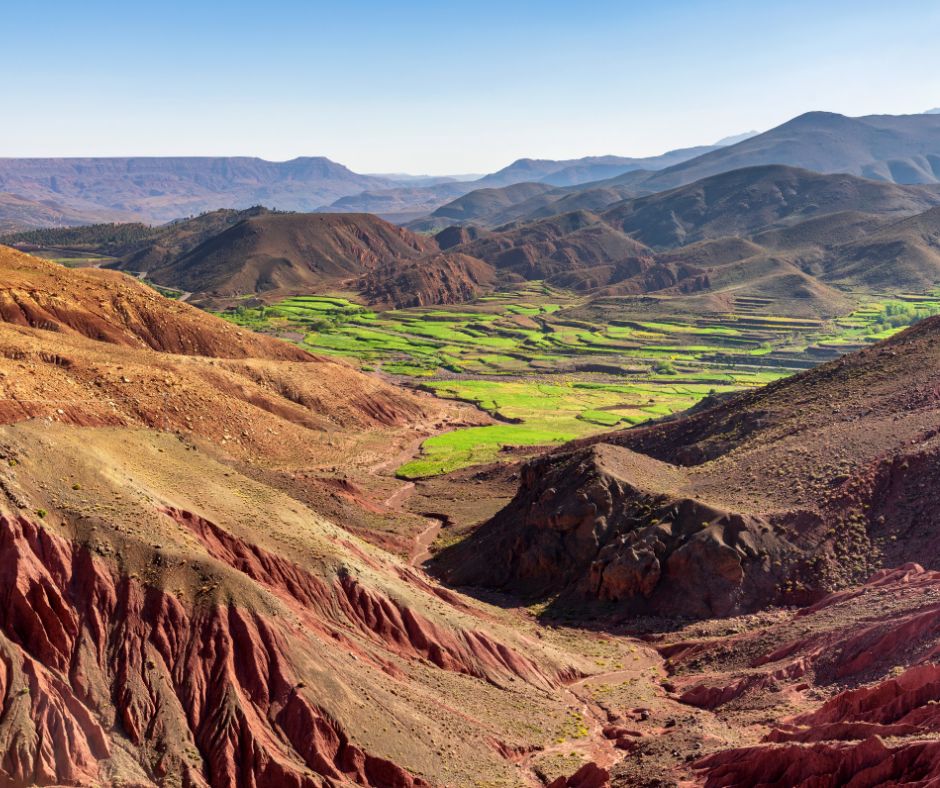
Mindfulness and Mental Preparedness
Stress Management: Practice stress management techniques, relaxation strategies, and mindfulness exercises such as meditation, deep breathing, or visualization to cultivate mental resilience, emotional well-being, and psychological preparedness.
Positive Mindset and Attitude: Foster a positive mindset, optimistic attitude, and growth mindset to overcome challenges, setbacks, and adversity encountered during your trekking adventure.
Goal Setting and Motivation: Establish clear goals, realistic expectations, and motivating factors to maintain focus, commitment, and enthusiasm throughout your trekking journey.
Overcoming Common Challenges
Altitude Acclimatization: Manage altitude acclimatization, altitude sickness symptoms, and physiological adjustments by following recommended guidelines, gradual ascent rates, and hydration strategies.
Weather Conditions and Climate: Prepare for variable weather conditions, climate changes, and seasonal variations by packing appropriate clothing, gear, and equipment suitable for changing environments.
Physical Fatigue and Endurance: Manage physical fatigue, muscle soreness, and endurance limitations by pacing yourself, taking breaks, and listening to your body’s signals to prevent overexertion or injury.
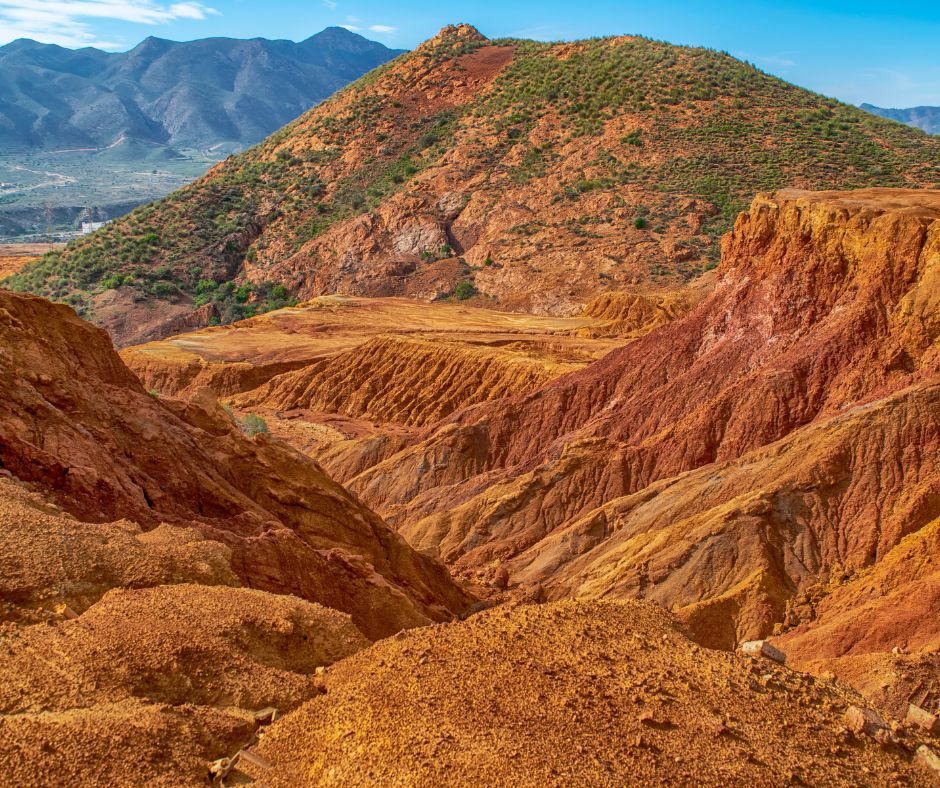
Local Crafts and Souvenirs: What to Buy
Exploring the local crafts and souvenirs of the Atlas Mountains offers a unique opportunity to support artisans, preserve cultural heritage, and acquire meaningful mementos of your journey. Here’s a guide to discovering authentic handmade artifacts, and traditional textiles, and supporting local communities.
Handmade Artifacts and Jewelry
Berber Artistry: Explore traditional Berber craftsmanship by purchasing handmade artifacts, pottery, ceramics, woodwork, or metalwork created by skilled artisans using time-honored techniques and designs.
Artisanal Jewelry: Discover exquisite artisanal jewelry, silverwork, beaded designs, or gemstone creations reflecting the region’s cultural motifs, symbols, and aesthetic traditions.
Local Markets and Souks: Visit local markets, souks, or artisan cooperatives to browse unique crafts, negotiate prices, and engage with artisans, craftsmen, and community members involved in preserving and promoting local arts and crafts.
Traditional Textiles and Fabrics
Woven Treasures: Acquire traditional textiles, fabrics, or woven goods such as carpets, rugs, blankets, or tapestries showcasing intricate patterns, vibrant colors, and regional motifs.
Embroidery and Needlework: Appreciate the artistry of embroidery, needlework, or textile embellishments featured in clothing, accessories, or household items crafted by local artisans.
Cultural Significance: Learn about the cultural significance, historical context, and symbolic meanings associated with traditional textiles, fabrics, and weaving techniques prevalent in the Atlas Mountains region.
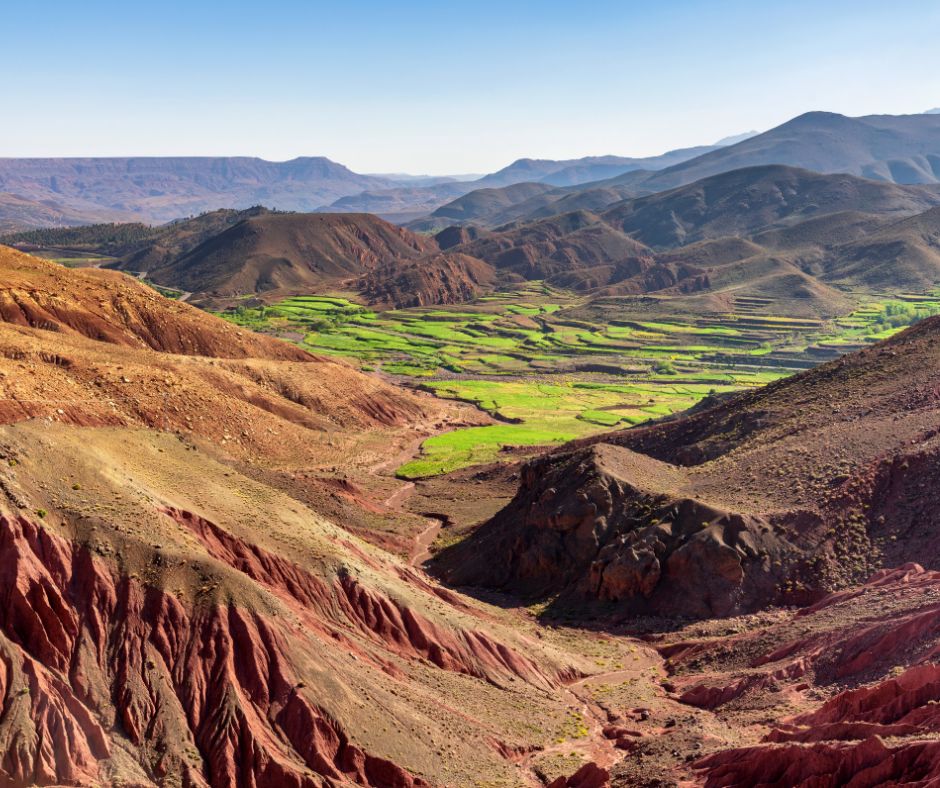
Supporting Local Communities
Economic Empowerment: Support local communities, artisans, and cooperatives by purchasing handmade crafts, souvenirs, or products directly from producers, ensuring fair wages, sustainable practices, and community development.
Cultural Preservation: Contribute to cultural preservation, heritage conservation, and traditional craftsmanship by investing in local arts, crafts, and cultural initiatives that celebrate and safeguard the rich traditions of the Atlas Mountains.
Social Responsibility: Prioritize social responsibility, ethical consumerism, and sustainable tourism practices by engaging with local communities, respecting cultural norms, and making informed purchasing decisions that benefit artisans, families, and community members.
Alternative Activities: Beyond Trekking
Diversifying your Atlas Mountains adventure with alternative activities such as mountain biking, rock climbing, cultural tours, and workshops offers exciting opportunities to explore new landscapes, engage with local communities, and expand your horizons.
Mountain Biking Adventures
Scenic Trails: Explore scenic trails, rugged terrains, and breathtaking landscapes of the Atlas Mountains region by embarking on mountain biking adventures tailored to your skill level, interests, and fitness capabilities.
Local Guides and Tours: Join guided mountain biking tours, cycling excursions, or trail experiences led by local experts, enthusiasts, or adventure operators familiar with the best routes, trails, and hidden gems of the region.
Equipment Rentals and Gear: Rent mountain biking equipment, gear, or accessories from local outfitters, shops, or tour operators offering quality bikes, safety equipment, and logistical support for your biking adventures in the Atlas Mountains.
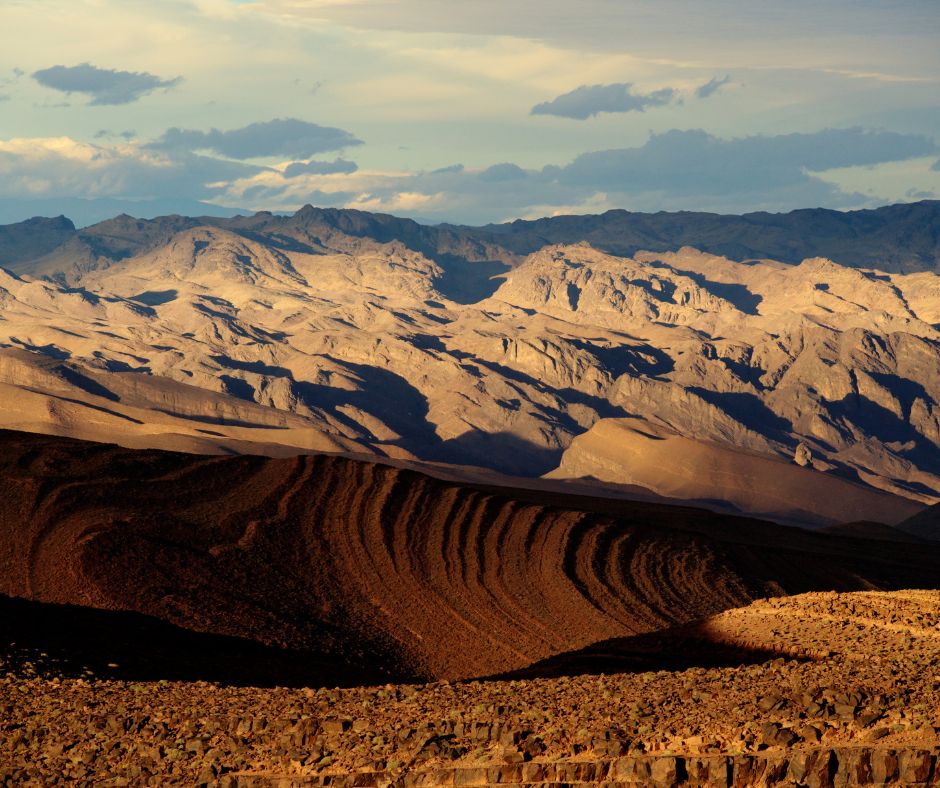
Rock Climbing Opportunities
Natural Formations: Discover rock climbing opportunities, natural formations, and climbing routes suitable for various skill levels, experience levels, and climbing disciplines within the Atlas Mountains region.
Professional Instruction: Seek professional instruction, guided climbs, or climbing courses offered by certified instructors, guides, or adventure companies specializing in rock climbing experiences, safety protocols, and technical skills.
Climbing Gear and Equipment: Ensure proper climbing gear, equipment, and safety precautions are in place by renting, purchasing, or consulting with local experts, climbers, or outfitters familiar with the specific requirements and conditions of rock climbing in the Atlas Mountains.
Cultural Tours and Workshops
Local Heritage: Immerse yourself in local culture, heritage, and traditions by participating in cultural tours, workshops, or immersive experiences that offer insights into the history, customs, and lifestyle of the Atlas Mountains communities.
Artisanal Workshops: Engage with artisans, craftsmen, or cultural experts through hands-on workshops, demonstrations, or interactive sessions focused on traditional arts, crafts, music, dance, cuisine, or storytelling prevalent in the region.
Community Engagement: Foster community engagement, cultural exchange, and mutual respect by supporting local initiatives, and attending community events, festivals, or celebrations that celebrate the unique identity, values, and contributions of the Atlas Mountains communities.
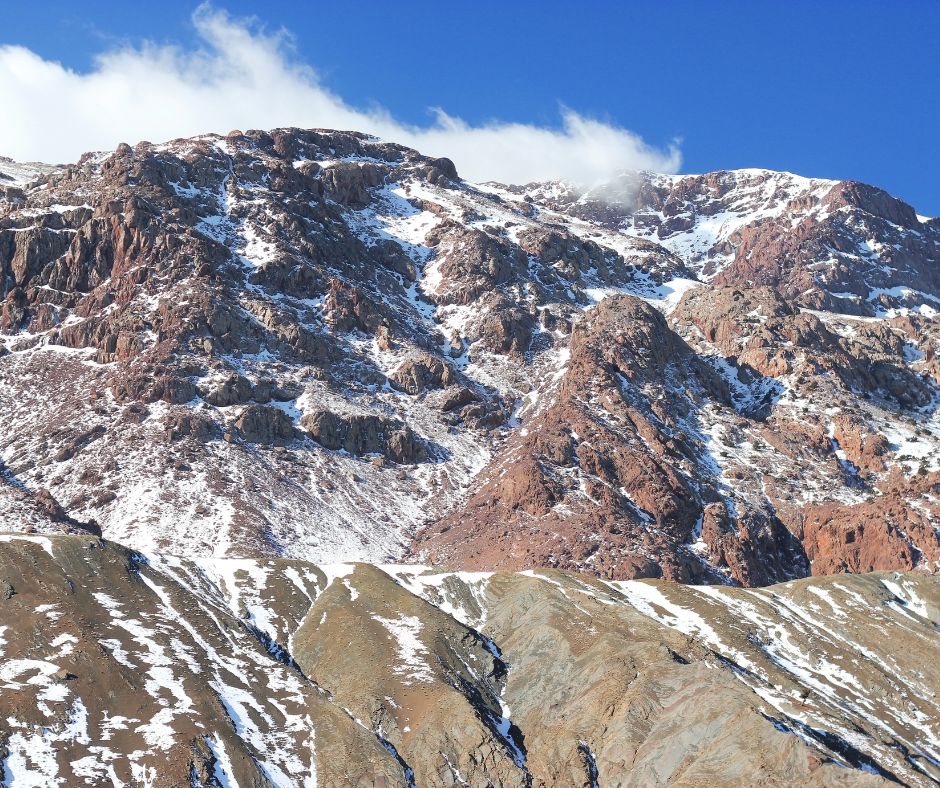
Environmental Conservation: Responsible Trekking
Promoting environmental conservation, sustainability, and responsible trekking practices are essential components of preserving the natural beauty, ecological integrity, and cultural heritage of the Atlas Mountains region.
Sustainable Practices and Initiatives
Leave No Trace: Adhere to Leave No Trace principles, ethical guidelines, and responsible travel practices that minimize environmental impact, reduce waste, and preserve natural resources during your trekking adventures.
Resource Management: Conserve water, energy, and resources by practicing sustainable behaviors, eco-friendly habits, and responsible consumption patterns that support environmental stewardship and ecological balance in the Atlas Mountains.
Waste Reduction: Minimize waste, litter, and pollution by practicing responsible waste management, recycling, and disposal methods that maintain cleanliness, sanitation, and hygiene standards within the region.
Community-based Conservation Efforts
Local Partnerships: Collaborate with local communities, organizations, or conservation groups involved in community-based conservation efforts, environmental initiatives, and sustainable development projects that protect and preserve the Atlas Mountains ecosystem.
Educational Outreach: Engage in educational outreach, environmental education, or community awareness programs that promote conservation awareness, environmental literacy, and sustainable practices among residents, visitors, and stakeholders.
Stewardship and Advocacy: Advocate for environmental stewardship, conservation policies, and sustainable tourism practices by supporting initiatives, campaigns, or organizations dedicated to protecting the natural, cultural, and historical assets of the Atlas Mountains region.
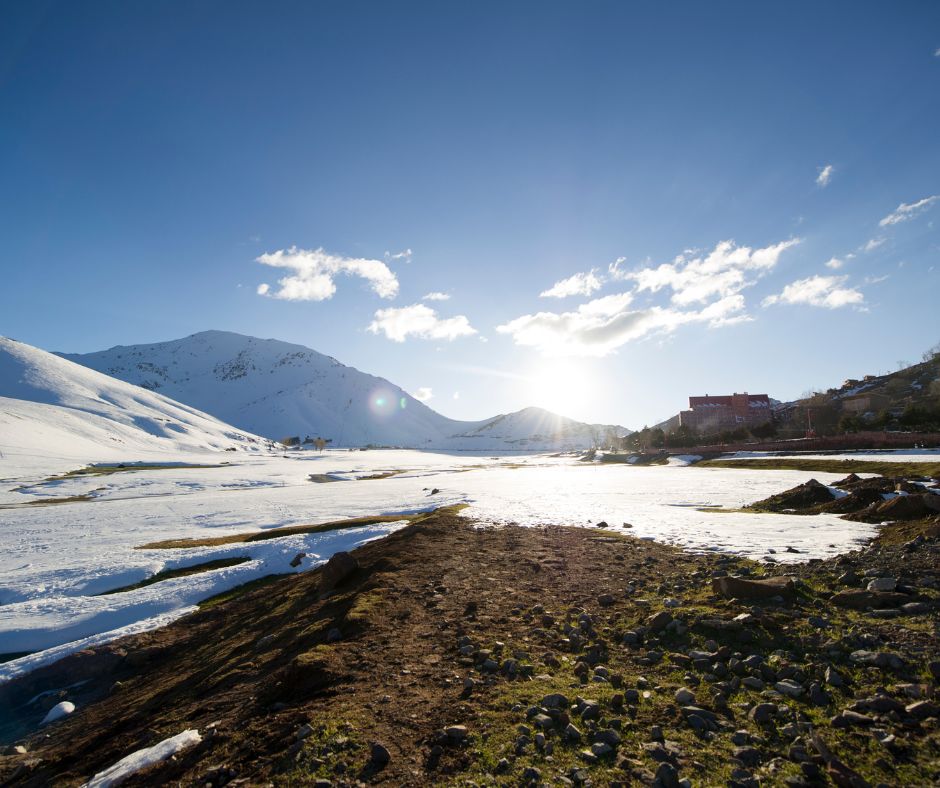
Carbon Footprint Reduction Strategies
Green Travel: Opt for green travel options, eco-friendly accommodations, or sustainable transportation alternatives such as public transit, carpooling, or biking to reduce your carbon footprint, emissions, and environmental impact during your trekking adventures.
Carbon Offsetting: Consider carbon offsetting, reforestation projects, or environmental mitigation strategies that support climate change mitigation, biodiversity conservation, and ecosystem restoration efforts in the Atlas Mountains region.
Environmental Advocacy: Participate in environmental advocacy, conservation campaigns, or sustainability initiatives that raise awareness, mobilize support, and catalyze action on pressing environmental issues, challenges, and opportunities facing the Atlas Mountains ecosystem.
Weather and Climate: Understanding Patterns
Navigating the weather and climate of the Atlas Mountains is crucial for ensuring a safe, enjoyable, and rewarding trekking experience. By understanding weather patterns, forecasting resources, climate change impacts, and safety considerations, you can plan effectively, make informed decisions, and mitigate potential risks.
Weather Forecasting Resources
Local Reports: Monitor local weather reports, forecasts, and updates provided by meteorological agencies, national parks, or trekking organizations operating within the Atlas Mountains region.
Digital Apps: Utilize weather forecasting apps, websites, or online platforms that offer real-time updates, radar imagery, satellite data, and weather alerts relevant to your trekking itinerary and geographic location.
Expert Advice: Seek expert advice, guidance, or recommendations from experienced trekkers, local guides, tour operators, or outdoor enthusiasts familiar with the weather patterns, seasonal variations, and climate conditions prevalent in the Atlas Mountains.
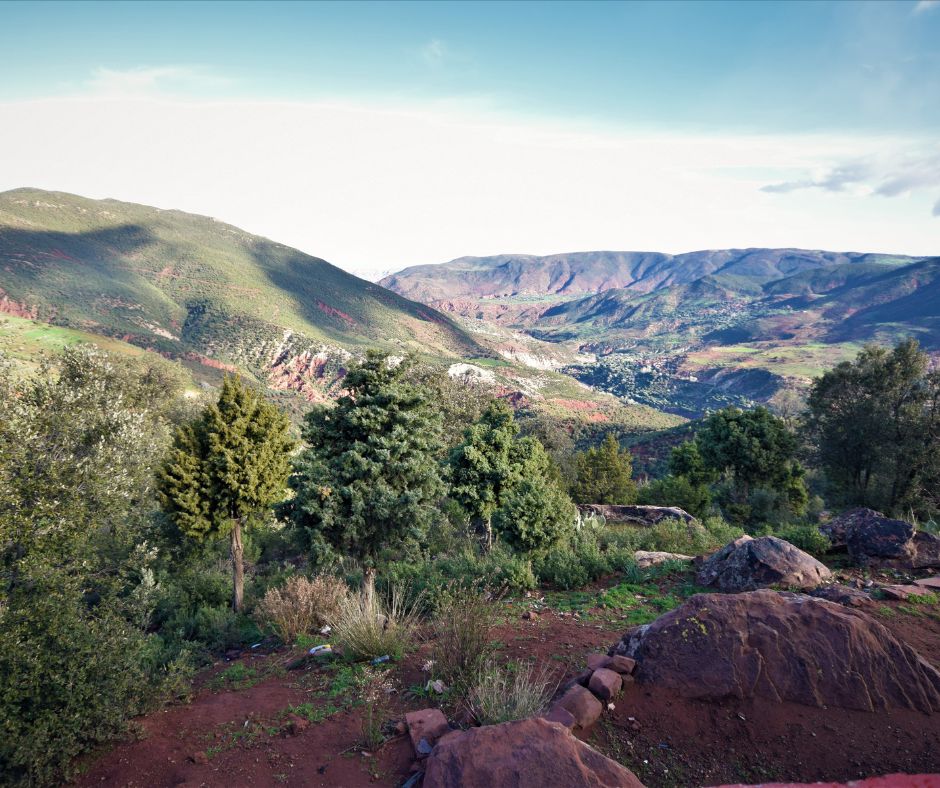
Nature Trails: Climate Change Impacts
Environmental Changes: Recognize the impacts of climate change, global warming, and environmental degradation on weather patterns, ecosystems, and natural resources within the Atlas Mountains region.
Ecological Balance: Support conservation efforts, sustainability initiatives, and environmental stewardship programs aimed at preserving biodiversity, protecting wildlife habitats, and restoring ecological balance in the face of climate change impacts.
Community Resilience: Promote community resilience, adaptive strategies, and climate resilience initiatives that empower local communities, enhance livelihoods, and mitigate vulnerabilities associated with changing weather patterns and environmental risks.
Hiking: Weather-related Safety Tips
Preparation and Planning: Prioritize preparation, planning, and readiness by researching weather forecasts, understanding climate conditions, and packing appropriate clothing, gear, and equipment suitable for variable weather conditions and seasonal variations.
Emergency Protocols: Establish emergency protocols, safety measures, and evacuation procedures in response to severe weather events, natural disasters, or unforeseen circumstances that may impact your trekking itinerary, route, or activities.
Risk Assessment: Conduct risk assessments, hazard evaluations, and safety checks to identify potential weather-related risks, assess vulnerabilities, and implement preventive measures, contingency plans, or alternative strategies to ensure your well-being and security during your trekking adventure.

Atlas Mountains: Reflecting on Your Trekking Experience
Embarking on a trekking adventure in the Atlas Mountains is a transformative journey that offers opportunities for personal growth, achievements, and reflections on your experiences, aspirations, and inspirations.
Personal Growth and Achievements
Self-discovery: Embrace moments of self-discovery, introspection, and personal growth as you navigate challenges, overcome obstacles, and achieve milestones during your trekking adventure in the Atlas Mountains.
Accomplishments: Celebrate your accomplishments, successes, and achievements by acknowledging your efforts, resilience, and determination to pursue your trekking goals, aspirations, or dreams in this spectacular region.
Milestones and Memories: Reflect on significant milestones, memorable experiences, and transformative moments that have shaped your trekking journey, enriched your perspective, and inspired your future expeditions or adventures.
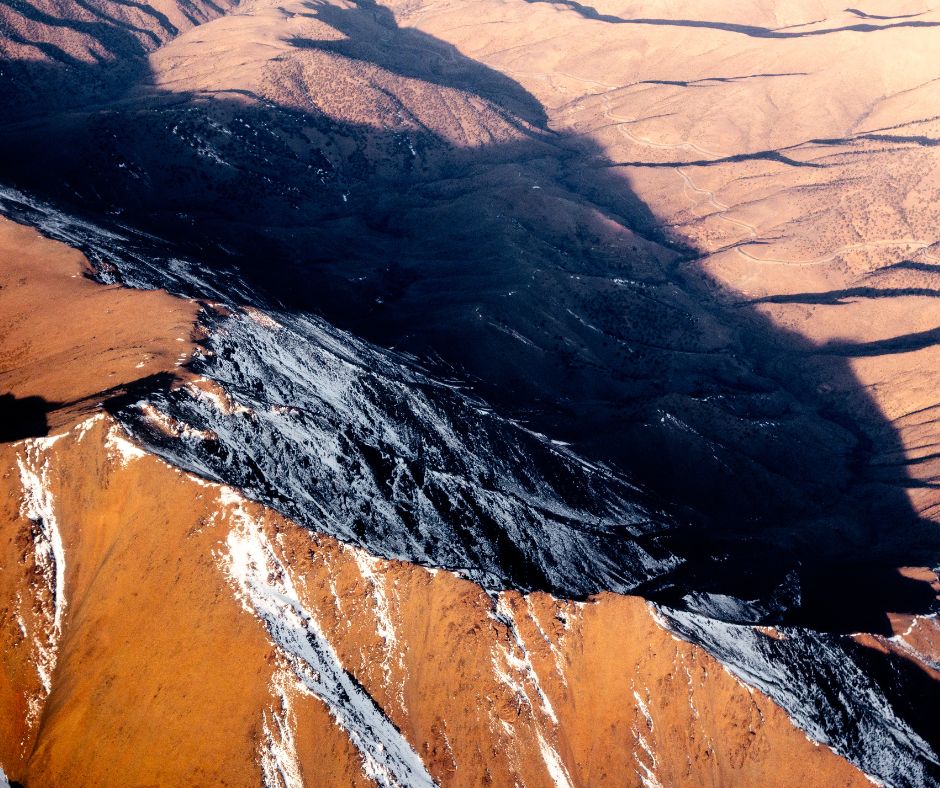
Future Expedition Plans
Exploration and Discovery: Continue your exploration, discovery, and pursuit of new adventures, destinations, or challenges that align with your interests, passions, and aspirations for trekking, mountaineering, or outdoor activities.
Planning and Preparation: Invest time, effort, and resources in planning, preparation, and readiness for future expeditions, adventures, or experiences that challenge, inspire, and motivate you to explore new horizons, push boundaries, and achieve personal goals.
Community Engagement: Engage with like-minded individuals, communities, or organizations that share your passion for trekking, outdoor exploration, or environmental conservation efforts aimed at preserving, protecting, and promoting sustainable practices within the Atlas Mountains region and beyond.
Inspirational Stories and Testimonials
Share Your Story: Share your trekking experiences, adventures, and achievements by documenting your journey, capturing moments, and sharing stories, testimonials, or insights that inspire, motivate, and empower others to pursue their passions, overcome challenges, and embrace opportunities for growth and self-discovery.
Community Connections: Foster community connections, collaborations, and partnerships with fellow trekkers, adventurers, or outdoor enthusiasts who share your values, interests, and aspirations for exploring, learning, and making a positive impact through responsible travel, cultural exchange, and environmental stewardship.
Legacy and Impact: Reflect on the legacy, impact, and contributions you have made through your trekking experiences, adventures, or initiatives aimed at fostering sustainable tourism, supporting local communities, and preserving the natural, cultural, and historical heritage of the Atlas Mountains region for future generations to enjoy and appreciate.
Embracing weather and climate considerations, reflecting on your trekking experience, and sharing inspirational stories or testimonials are essential components of a rewarding, meaningful, and transformative adventure in the Atlas Mountains.
By prioritizing safety, planning effectively, and cultivating connections with local communities, fellow trekkers, and environmental advocates, you’ll create lasting memories, achieve personal growth, and
